Paradise was the first word that came to my mind when the Mi-8 descended onto the little heliport next to the small cabin on Lake Kurile. The water of the lake below was painted in different colors, green forests threw their shadow into the lake where bears were hunting salmons, lots of bears. Kronotsky Nature Reserve in southern Kamchatka is Bears’ Country.
Stop over at Ksuchad Volcano
The perfect prelude for this heaven-like scenery was a dramatic landing at the rim of Ksuchad Volcano, another place of unreal beauty.The chopper dropped us off on the rim of the caldera and met us later at this bottom, on the sandy beach of the crater lake. It is quite an experience to cower on the ground while a helicopter takes off right next to you, the noise is deafening and the wind seems to pull you up. The last eruption of Ksudach was in March 1907, the largest ever recorded in Kamchatka. The ash was spilled high into the atmosphere which was transported by the jet stream, leaving North America east of the Rockies unseasonably cold.
Vertical walls hold the blue water like a giant cupped hand, the color changes by the minute depending on how the clouds allow the sun to touch on the lake.
Two photos taken one year apart: The beauty of this crater lake is still the same, so is my red T-shirt!
After the drop off at the rim of the crater, we walked down to a small beach where the helicopter was sitting on the sand, a small buffet had been put up and the pilots waited for us. Conversing with the captain while sipping tea made me feel a bit like Daisy in the Great Gatsby.
Comparing the visit in 2016 to 2017
Each time I visited, approaching Lake Kurile and the stop at Ksuchad Volcano were equally unforgettable. The bear watching happened to be very different though: in 2016 the river was literally red with salmon and the bears were constantly hunting and eating. Fish was so abundant that some bears only stripped the fish off its skin, ate it and let the fish drift off downriver, an unpleasant sight.
In 2017 most of the salmon was gathering at the mouth of the river, waiting, so the bears showed little activity compared to the year before. They resorted to all kind of tricks, standing upright or climbing on driftwood in the river to get a good overview of the movement of the salmon they eagerly were waiting for.
This lack of hunting was of course a bit disappointing, but there was one big advantage, the bears were so hungry that they would not give up a single salmon and we got to watch spectacular fights that ended with the winner wandering off with a mutilated fish.
The other difference was that in 2017 a few times Japanese tourists were brought in for the day that sat on the opposite side of the river flashing their expensive camera equipment and making it difficult for us to shoot good photos. Otherwise the program was the same, which consists of two daily trips to the viewing platform and the excursion up the river and to the tundra.
Bear watching
The bears can already be seen from the helicopter when approaching the landing platform next to the cabin, once I even saw one swimming across the lake, holding on to a fish.
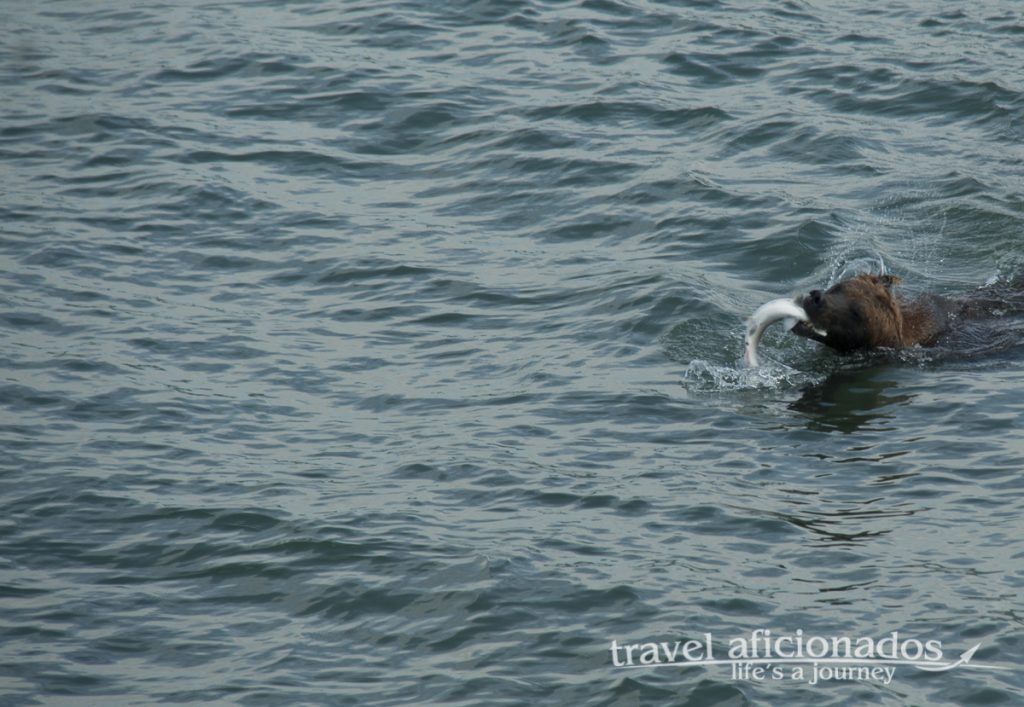
Photo taken from the helicopter: a rare sight bear hunting outside in the lake, he must be really hungry
We all could not wait to get outside the electric fence that runs around the small camp, but you can only do so when accompanied by Lena and Constantin. These two rangers spend all summer there and introduced us this environment. Rule number 1: make yourself noticed to the bears, don’t surprise the bears. Both carried a gun they had never used in all the years they had worked there. Bear flare is seldom used to drive away cheeky bears. Usually Constantin took the lead and Lena walked at the end of our single-file convoy.
Walking along the sandy shore of Lake Kurile to the two-story viewing platform is already pretty exciting, bears on the beach, bears in the grass and in the water.
The viewing platform sits right where the Khakytsin River feeds into salmon-infested Lake Kuril. The salmons gather at the mouth of the river to make it upstream, spawn and die. The bears simpy wait for them to pass, shortening their life a few days. This is where we hung out for the next few days, twice a day. In 2017, mid August, the salmons were still waiting in the lake and so there was little hunting, which is of course the most exciting activity to watch, but on the other hand there were ugly fights over the few salmons.
Travyanoy – home for three days
Landing next to the wooden cabin on Lake Kurile, our comfy home for four days, was really exciting. The pilot has only a super small platform where he can land, this and the blasting noise, pure drama. On the veranda of the lodge those who are leaving watch the new arrivals with pure envy, since everybody wishes to stay on. Once the human and culinary cargo for the coming three days has spilled out of the belly of the MI8, those who leave crawl in.
I tried to be among the first in the wooden cabin since I knew it was all bunk beds and I wanted to sleep in a bottom one. The two upper rooms each accommodate eight guests, there is also a toilet upstairs and one shower.
To wash we have to go outside, to a long row of sinks for our morning/evening wash and tooth brushing. There is no more scenic bathroom like this one in the whole world.
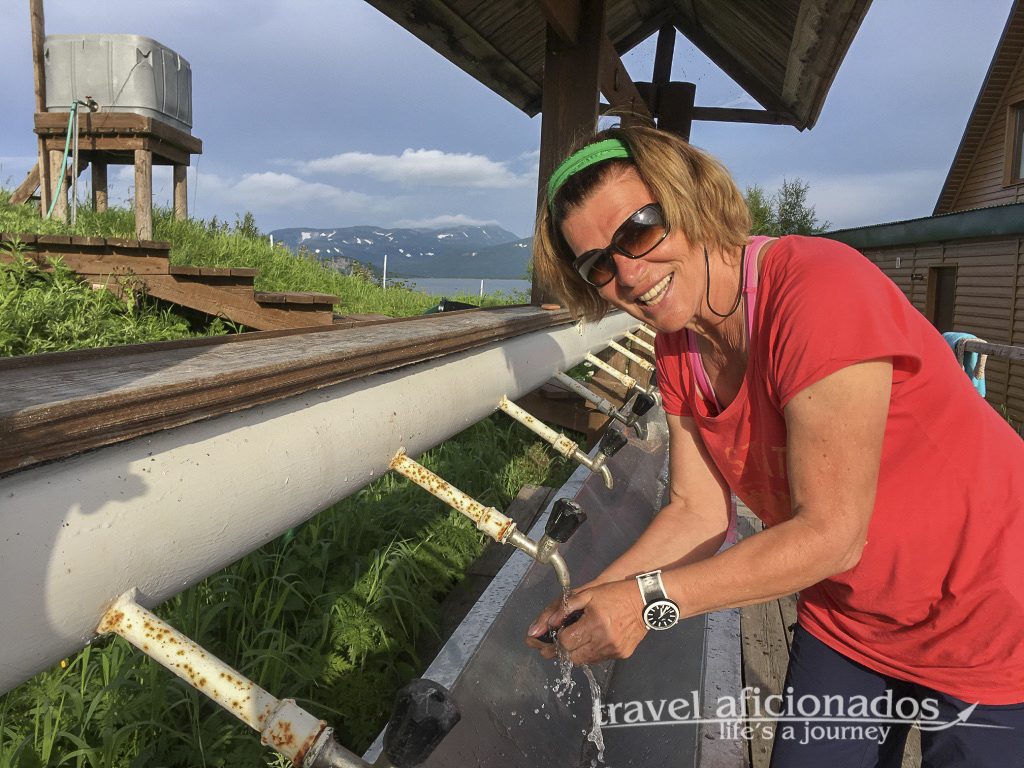
Outside bathroom with a view
Downstairs in the tiny kitchen, a lady prepares delicious breakfast, lunch and dinner. She is the personal cook for the particular group staying at the cabin and travels with them. The small dinning area serves also as a meeting place in the evening, if the temperatures get chilly outside. Up at the viewpoint next to the cabin we spent some evenings. The Russian tourists among us eagerly shared their vodka rations with us, once we even celebrated a birthday of a young volunteer.
The rangers live in a small cottage a few meters from the main lodge.
Most wonderful, there is no phone or internet reception, at Grass the 16 guests actually talk a lot to each other, play cards or simple gaze at the amazing scenery. For me the absolute tranquility makes Travyanoy one of my favorite places on this globe.
Killed by a bear: The tragic death of nature photographer Michio Hoshino
This story really shook me up. In 1996 a famous Japanese nature photographer was filming on Lake Kuril together with two other photographers, they were accompanied by two Russian inspectors of the Park Service. The men encountered a huge bear that showed no fear which of course made the animal particularly interesting for Mishio Hoshino who wanted to get as close as possible. Back then only a small hut provided shelter and this is where the inspectors and two of the three photographers spent the night. Mr Hoshino insisted on sleeping in his tent, around 11pm the bear ripped through the tent killing Michio instantly, the bear then dragged the body away. In the morning the shocked inspector raced the boat across the lake to get help and rangers hunted down the aggressive bear from a helicopter, and yes bits of Mr. Hoshino were inside his stomach.
A small memorial reminds the visitors of this tragic death and the fact that these are wild, super strong animals. The staff told me that Japanese tourists sometimes bring offerings that they leave next to the stone. At Kuril Lake the bears have become used to the tourists but it is certainly not a zoo.
Hikes to the White Cliffs and the Tundra
A longer walk took us along the Khakytsin River up to a place with spectacular white cliffs.
We saw quite a few bears and had great fun crossing little streams testing our waste-high waders. At the white cliffs, the riverbed is wider and in 2016 there was so little water that the salmons literally had to wiggle their way up, half of their body exposed, making them easy prey. This tempted Rene, a fun-loving German, to catch the salmon with his bare hands. Soon Seeren, a young engineer from the UK who works for Shell in Sakhalin, joined in and the famous photo was taken. We had no idea that a year later Seeren and I would meet again in Sakhalin and travel to Iturup together.
This place is where we had lunch, took photos of bears and listened to Lena telling bear story, Constantin does not talk a lot, I think I decided at one point to avoid the same, reoccurring questions by the ever-changing tourists by simply no talking at all.
One day Lena and Constantin took us for a walk to the tundra, with flowers in bright bloom.
This hike was the only time that I saw Lena upset. Two young men, orthodox priests, fell asleep in the grass since they had drunk so much the previous evening. We were very close to the bears in the wilderness and Lean was worried to have two completely unreliable person in the group. We got to watch bears in a completely different environment, peaking from behind the grass, mothers with little cubs resting on the shore.
Counting Salmon on the Ozyornya River
From our cabin at Travyanoy a 20 minutes boat ride brought us to KamchatNIRO Research Station at the mouth of the Ozyornya River. A bridge-like construction serves to count the salmons, an average of 3 million passes each year, the absolute maximum was 6 million one season. A few tents accommodate tourists, there is even a small gift shop with great books of Kamchatka.
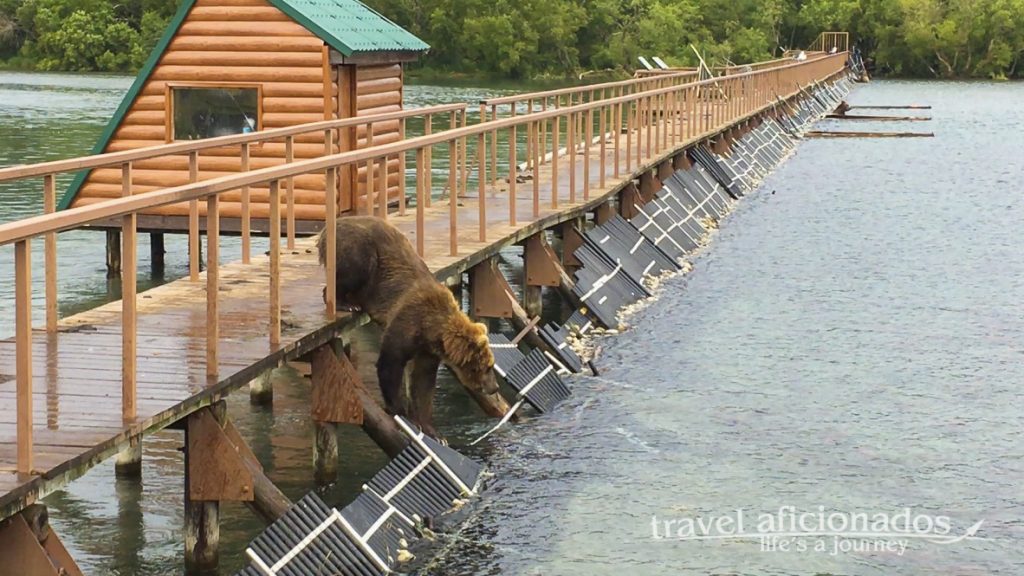
KamchatNIRO Research Station, an average of 3 millions salmons per saison pass this counting station
The last day I was full of nostalgia. I wished so much that I could stay a couple more days marveling at this gorgeous creatures. I envied the newly arriving tourists that crawled out the helicopter that would take us back to Petropavlovsk. Only once in all these years the pilots could not fly in due to the very bad visibility and the tourists stayed on, living off salmon and potatoes, since the food for each group is precisely planed and brought in.
Usually, some of the 16 tourists are not going back to Petropavlovsk but are dropped off at the camp on Mutnovsky. In 2017 this was a thrilling experience, the visibility was very bad and the pilots decided only in the last few minutes to dare the landing. After lifting off the helicopter suddenly started spiraleling its ways up through the clouds, we could not see a thing and held our breath.
Total costs: for three days on Kuril Lake € 2200, including two nights at Hotel Petropavlovsk, helicopter, accommodation and food.

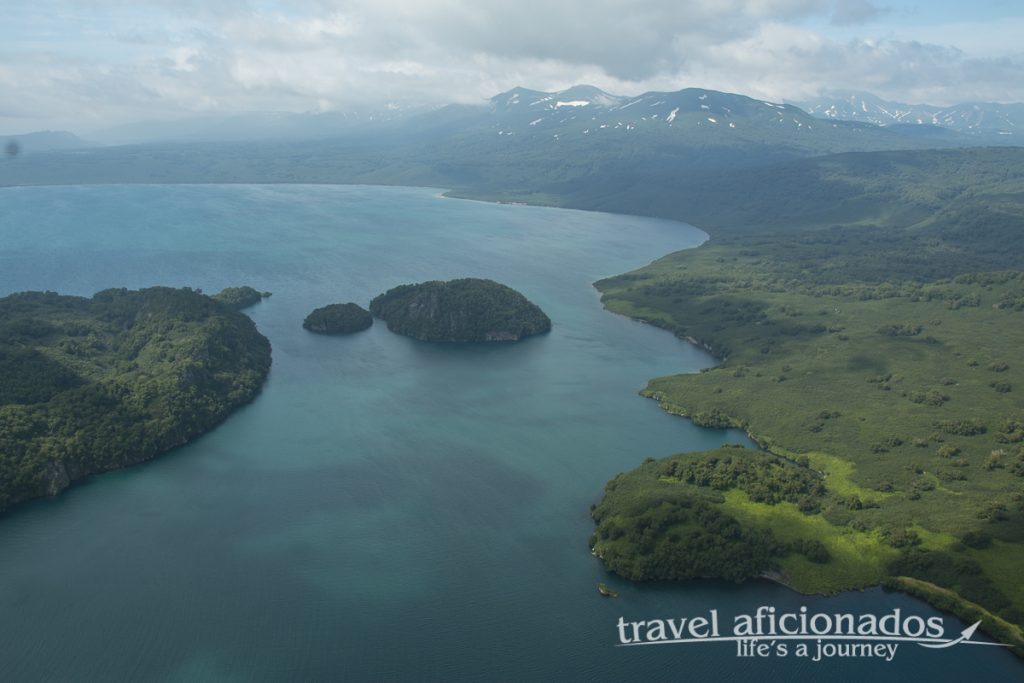
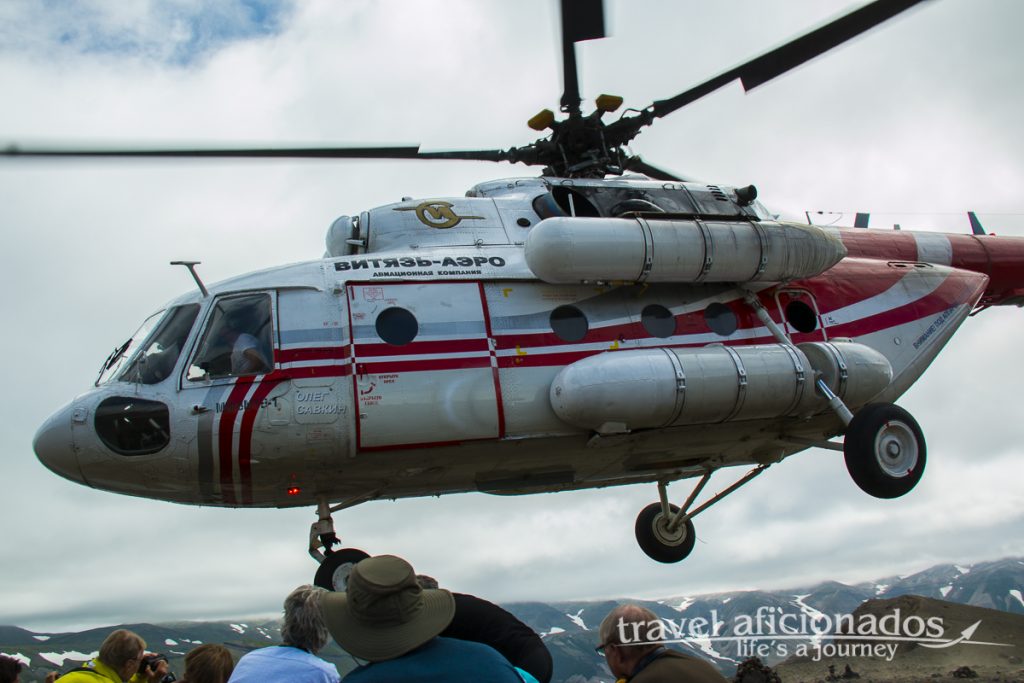
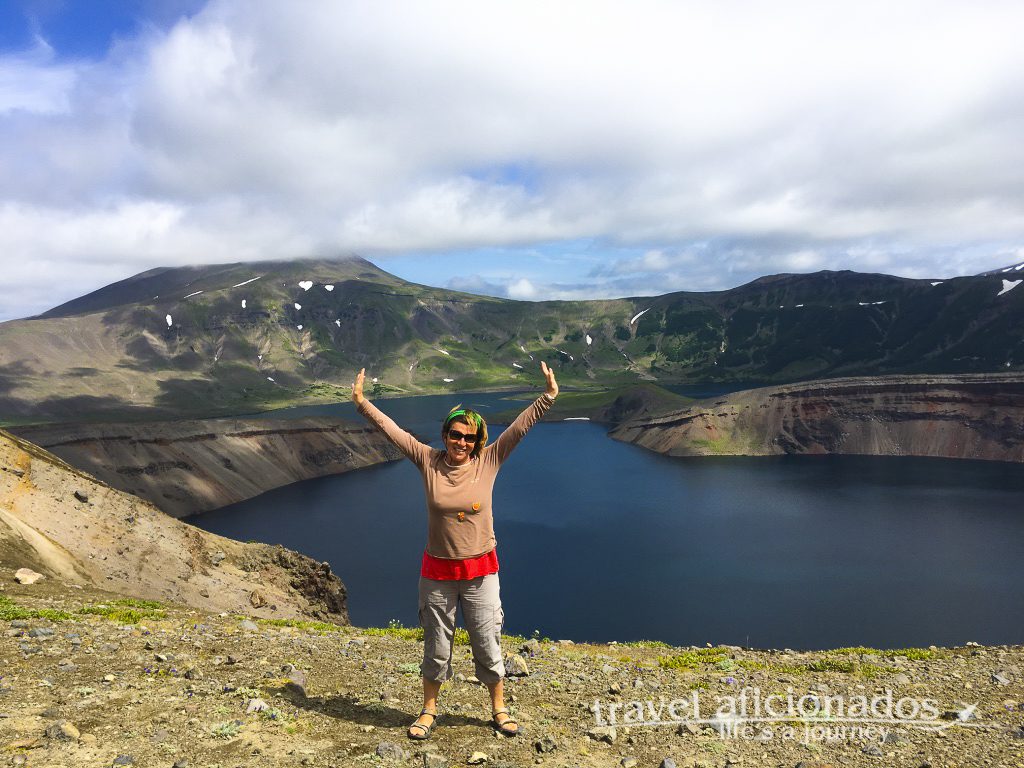

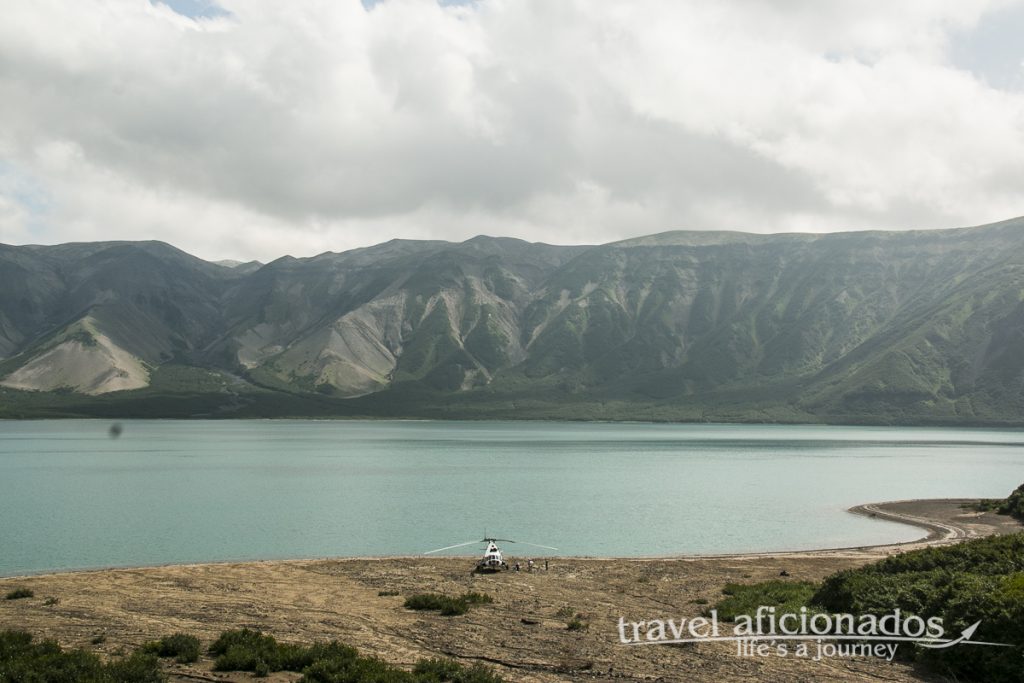
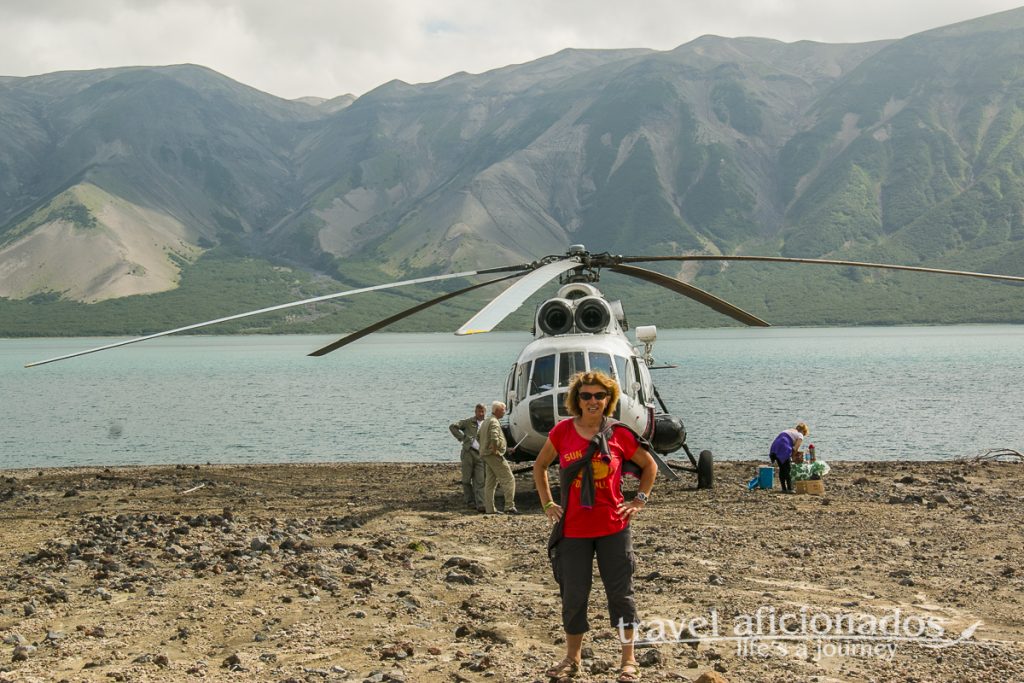
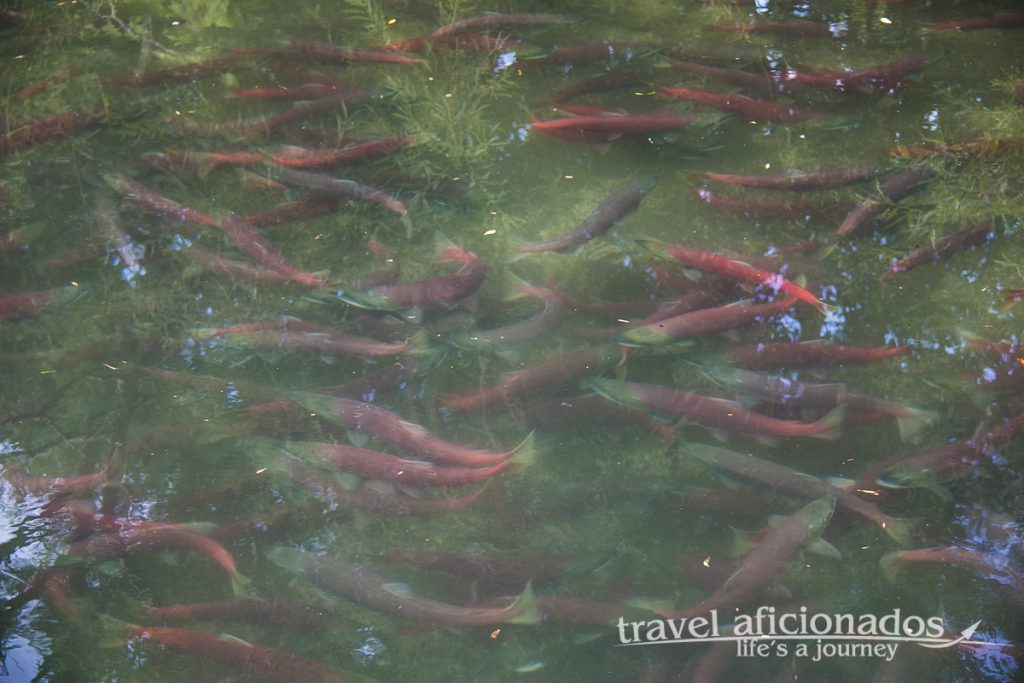
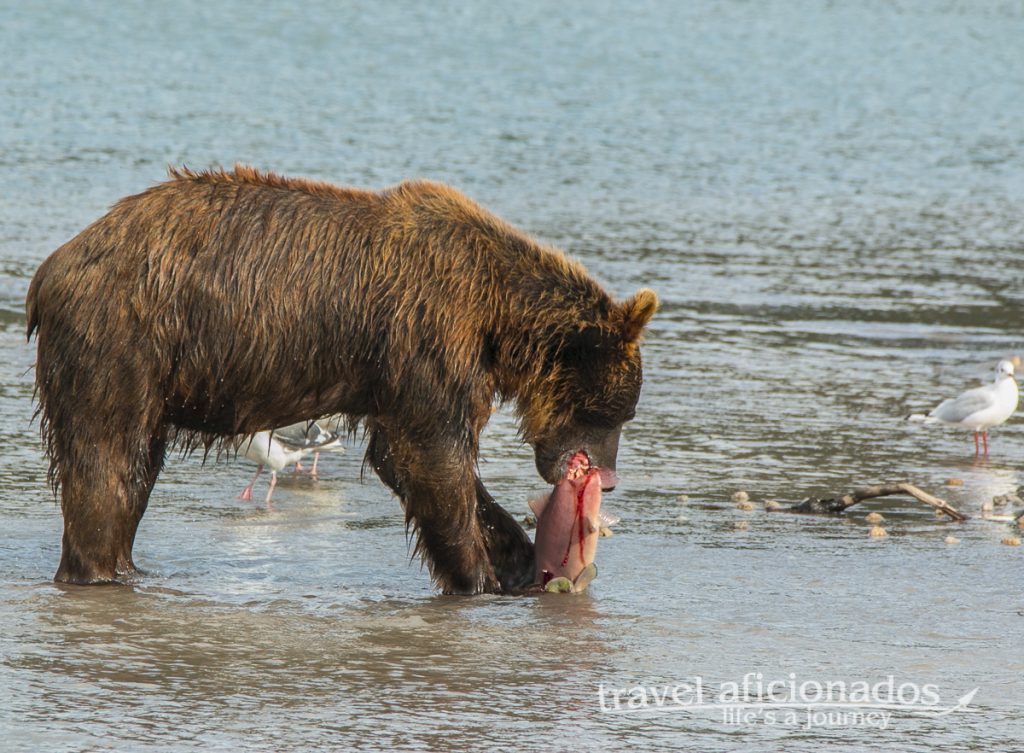
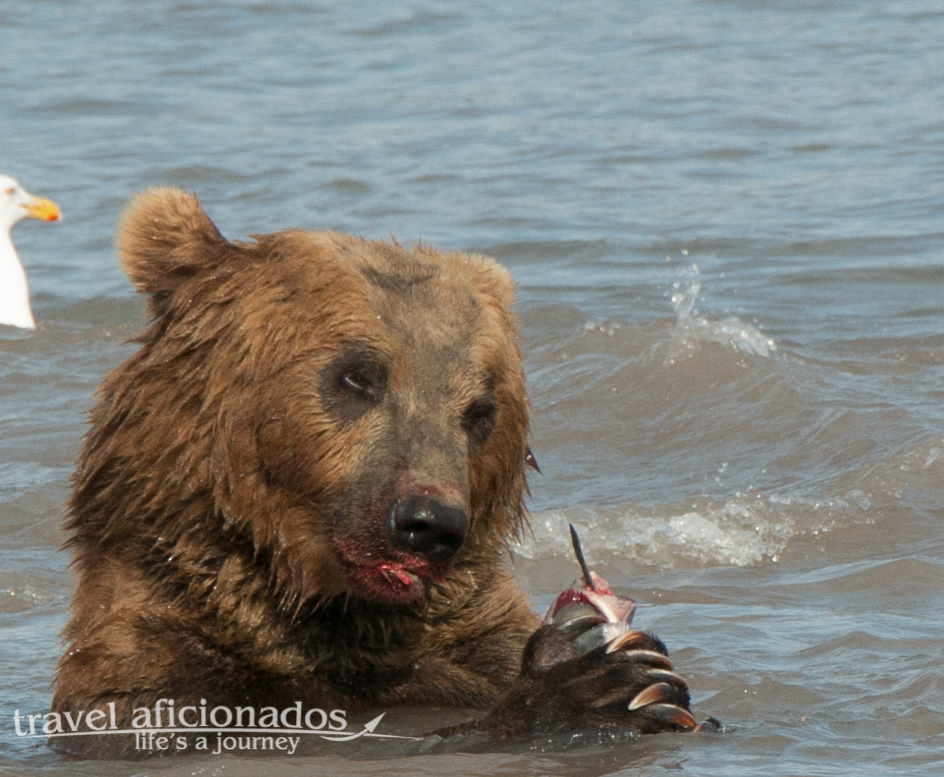
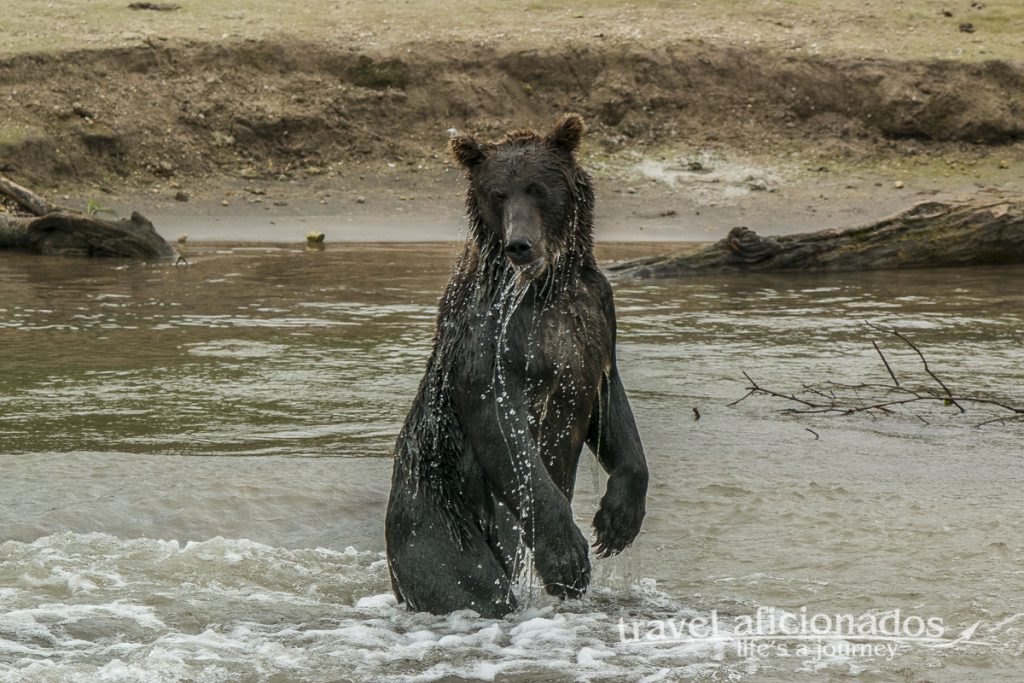
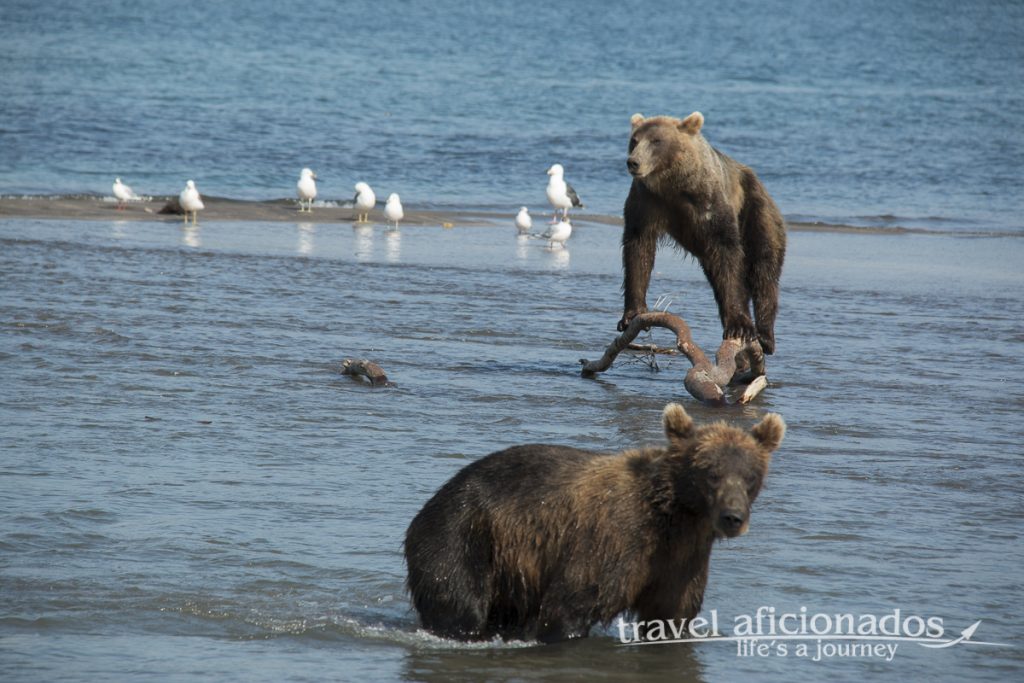
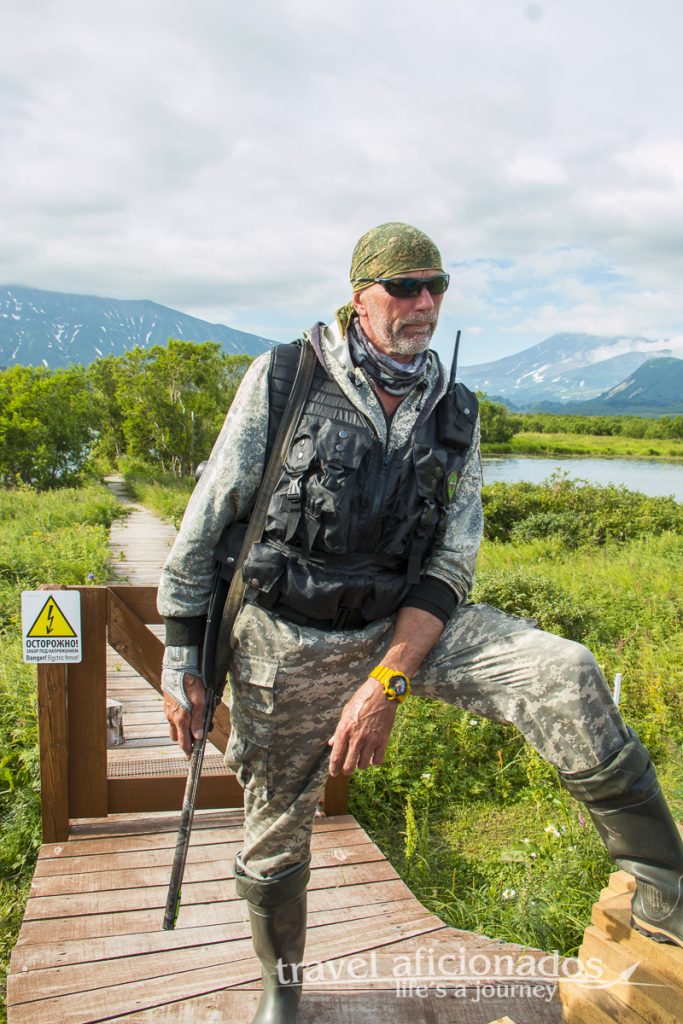
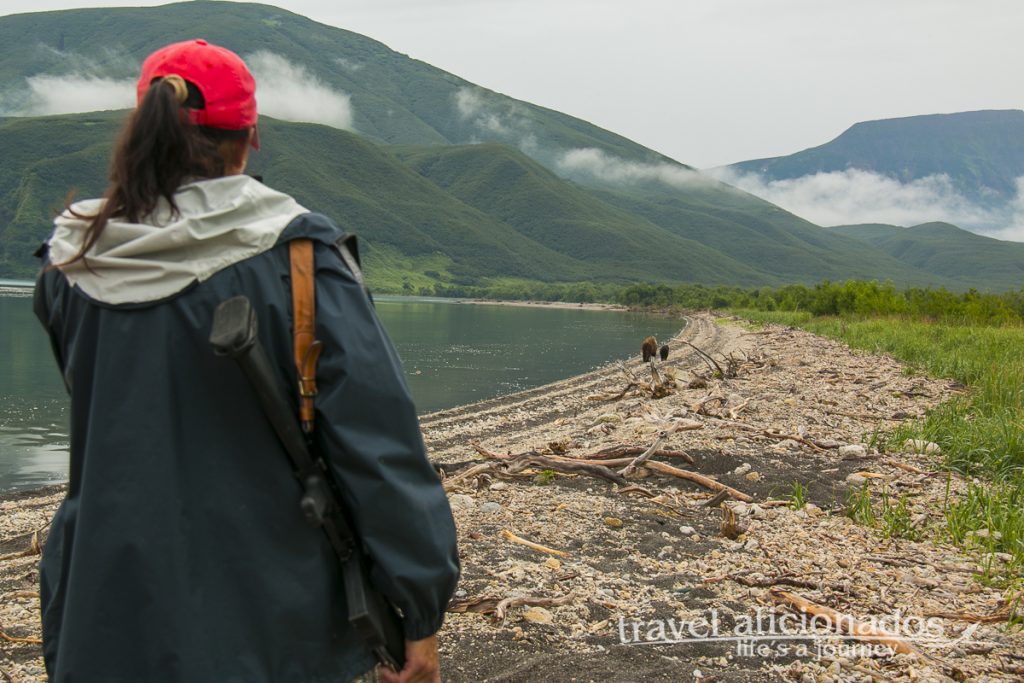
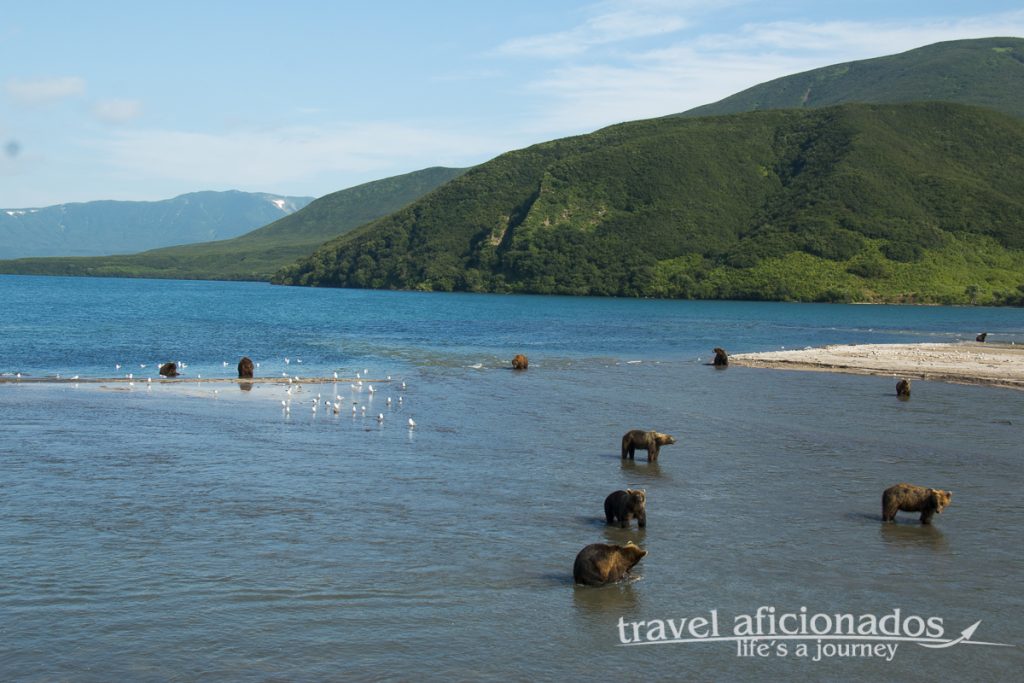
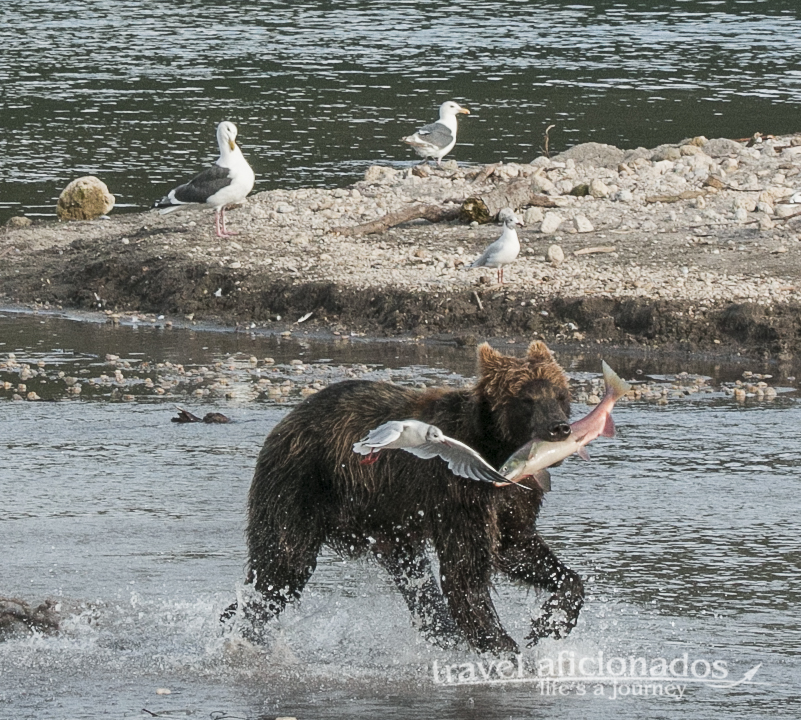
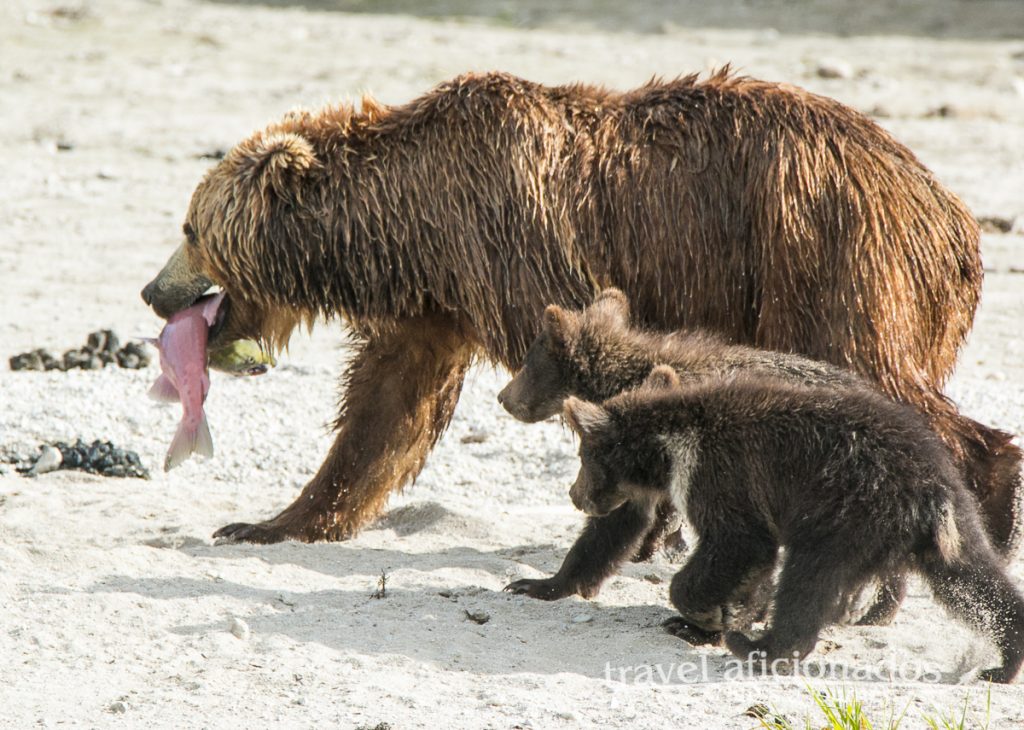
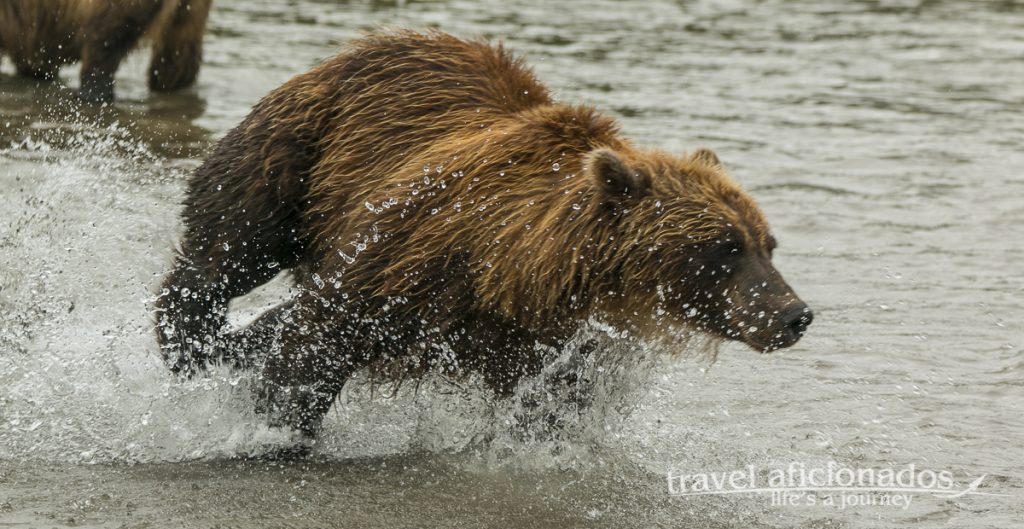
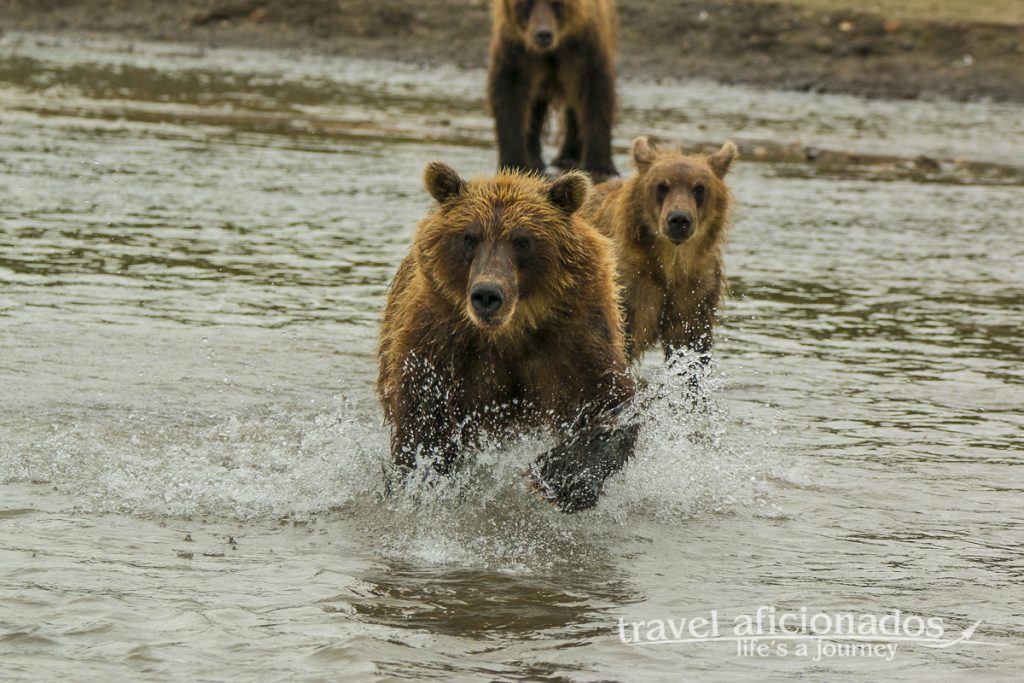
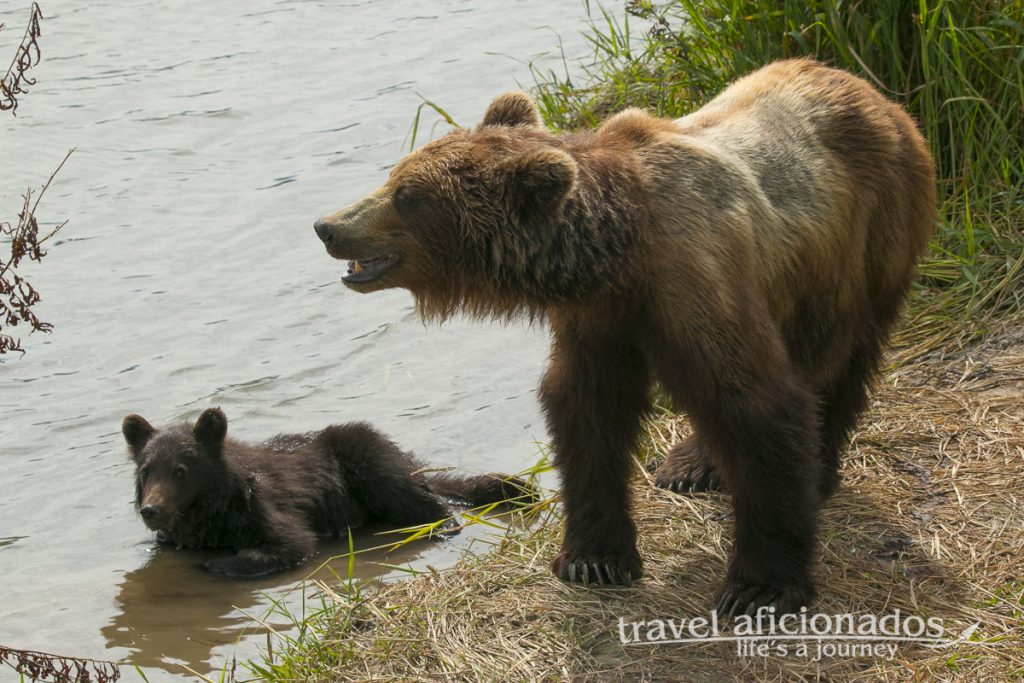
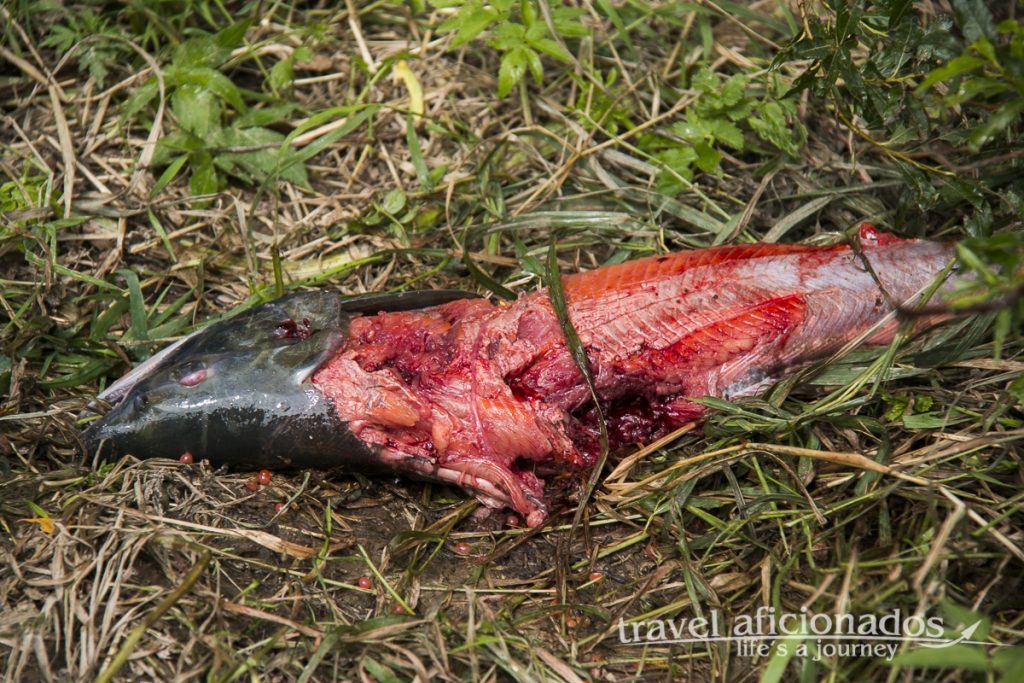
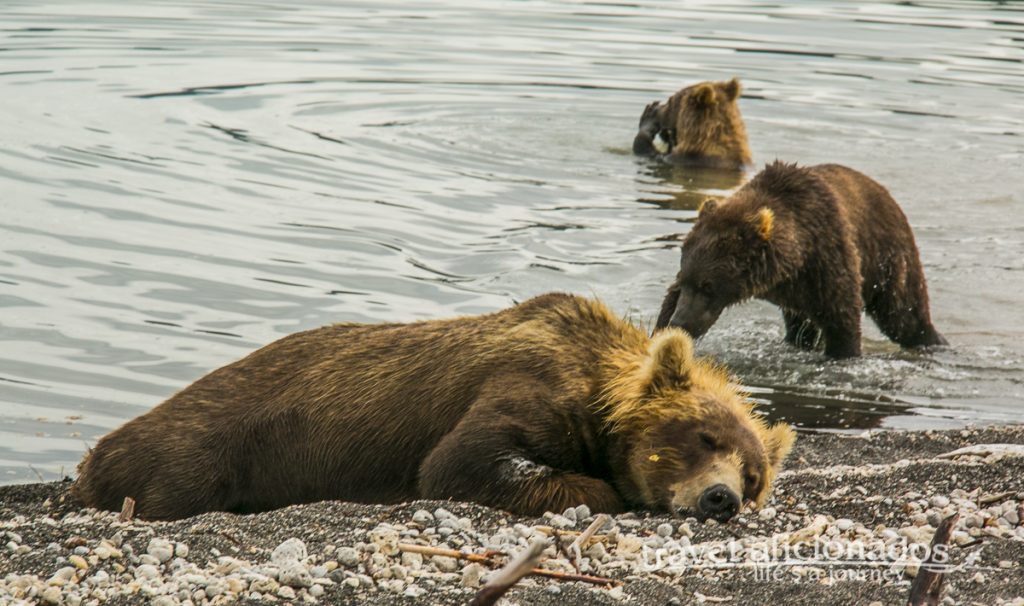
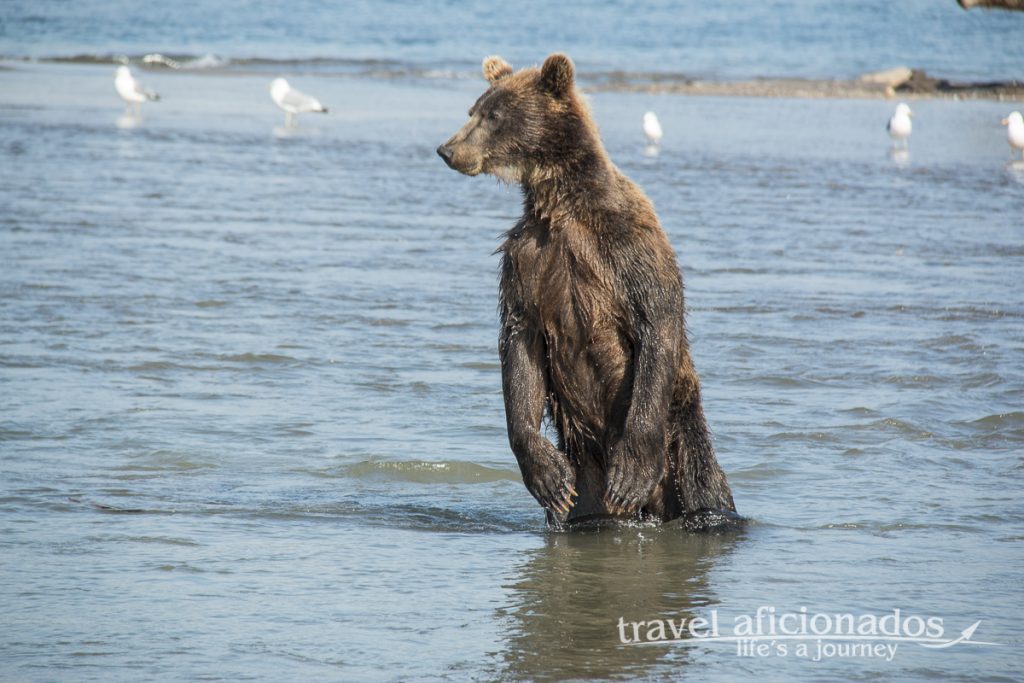
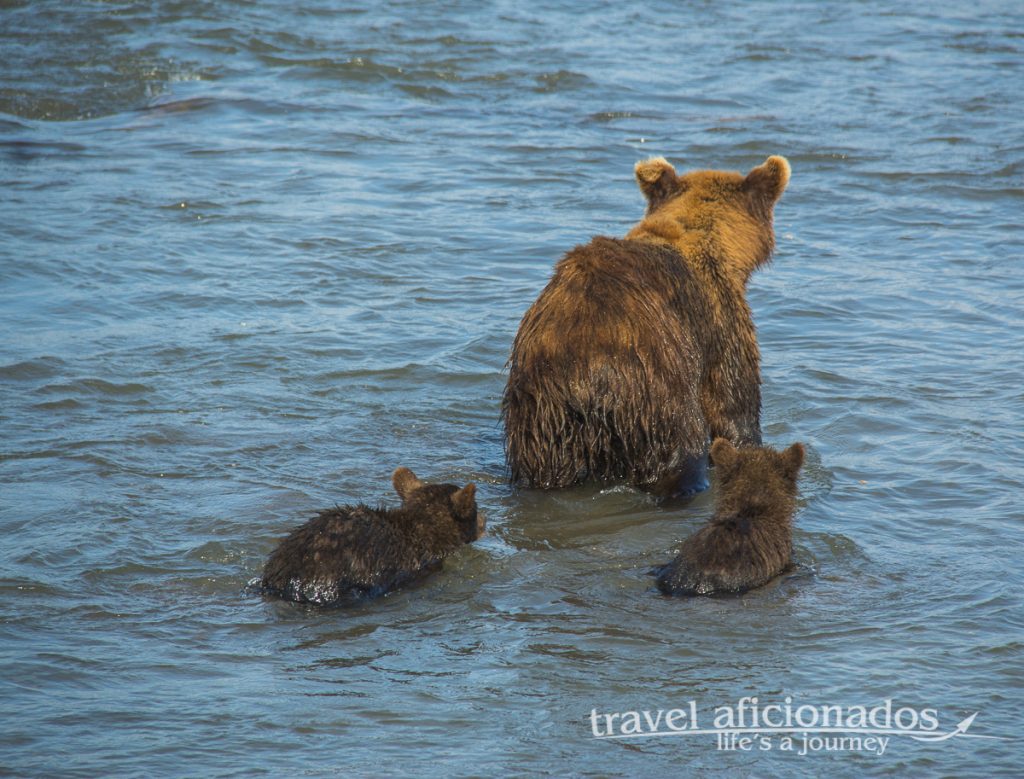
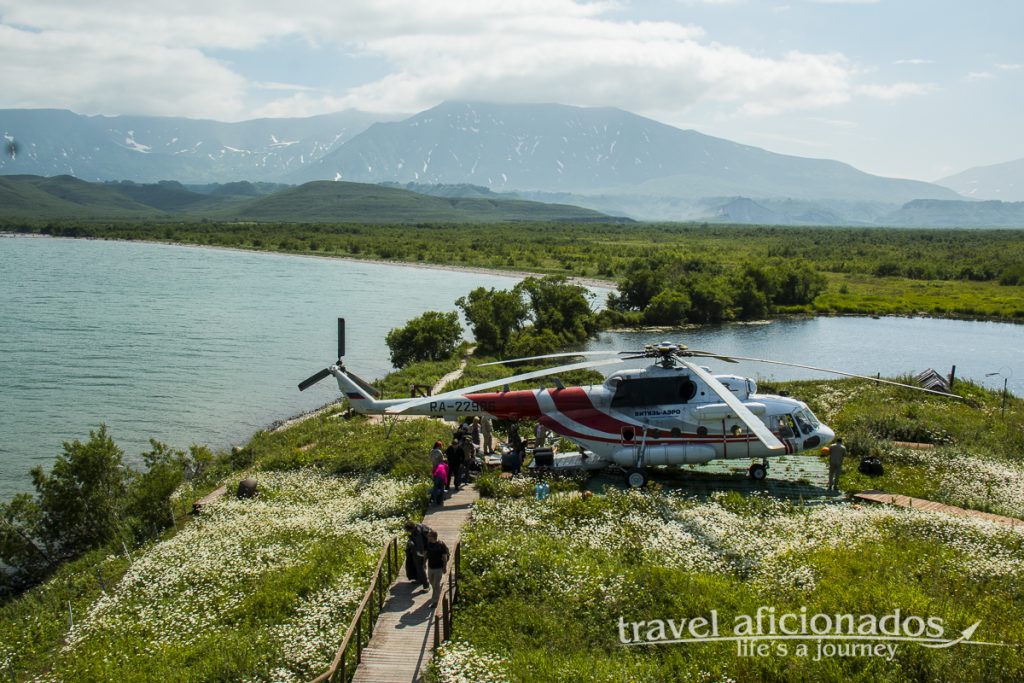
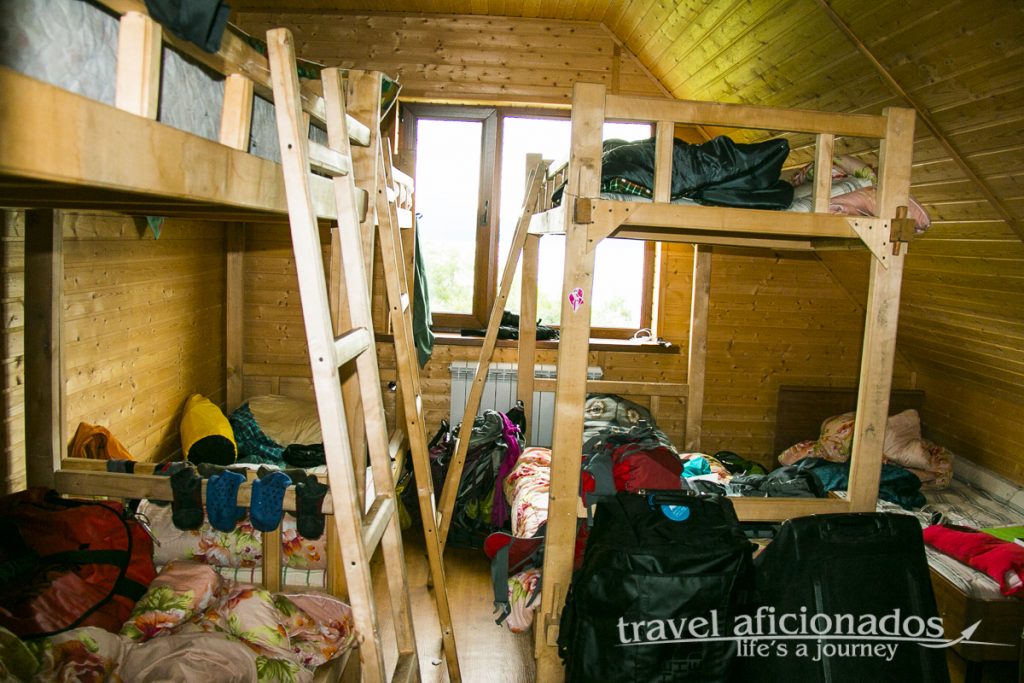
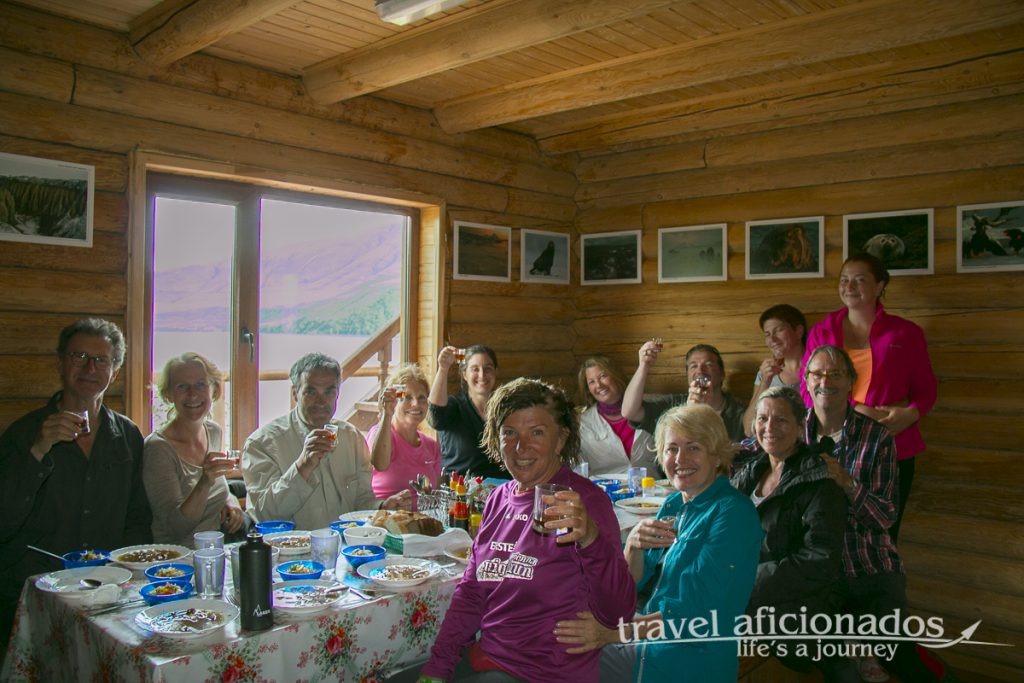
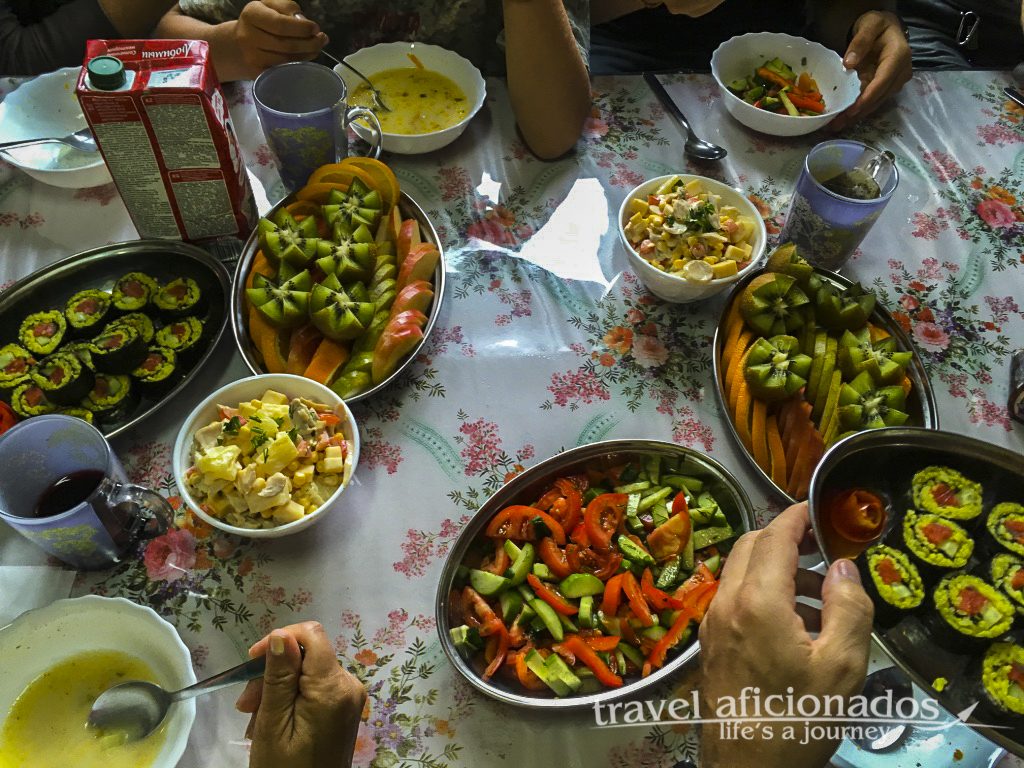
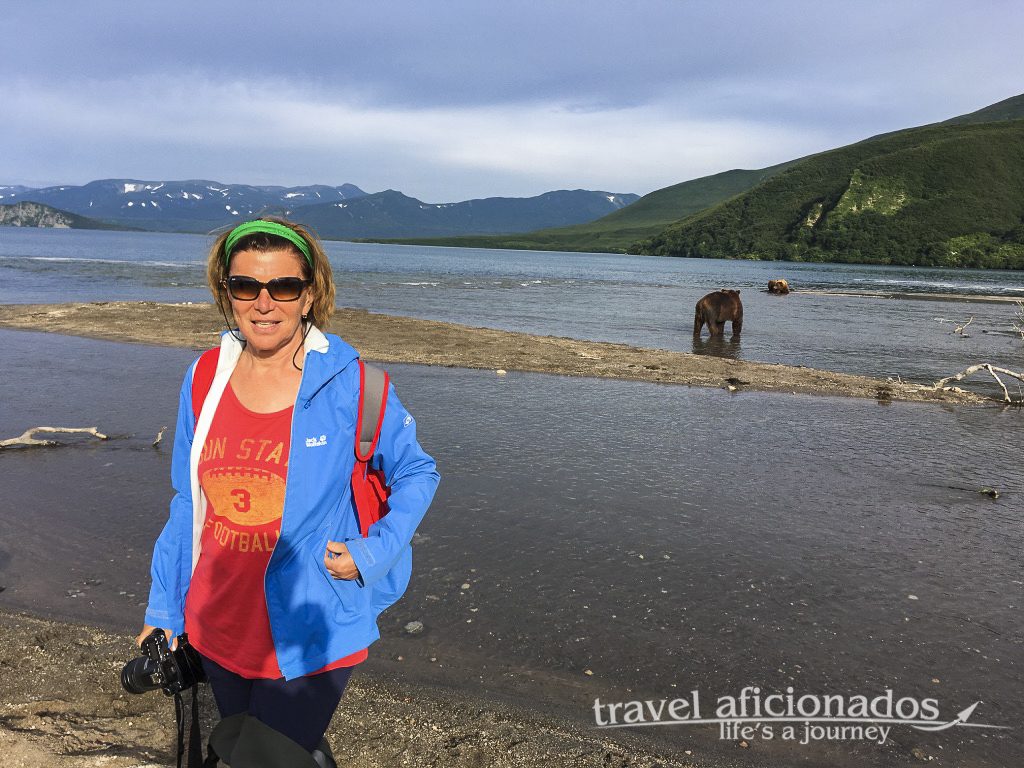
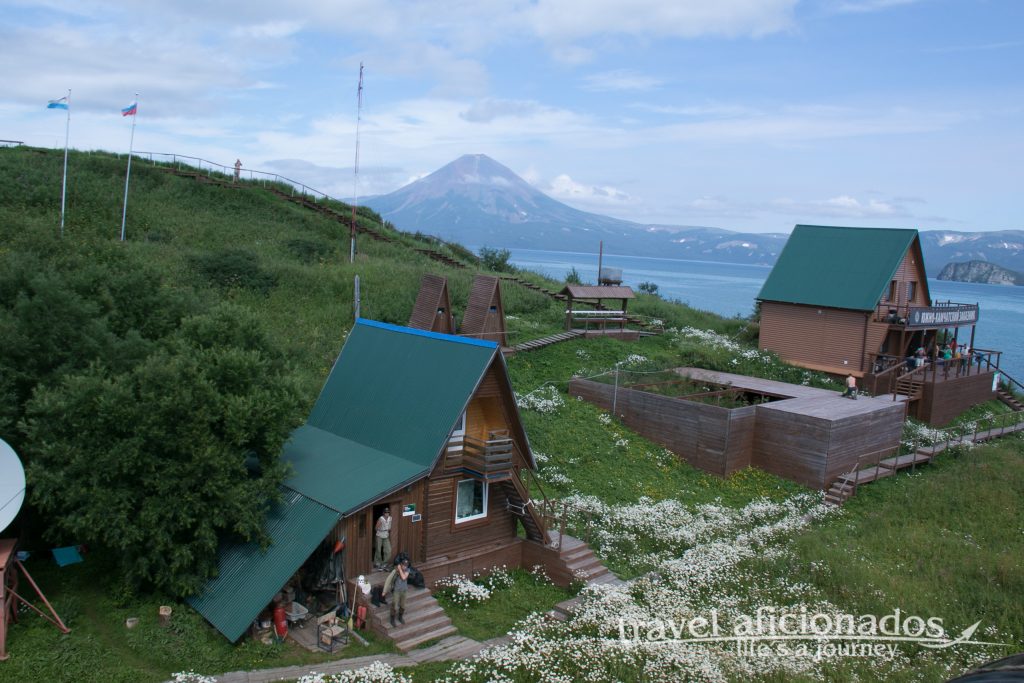
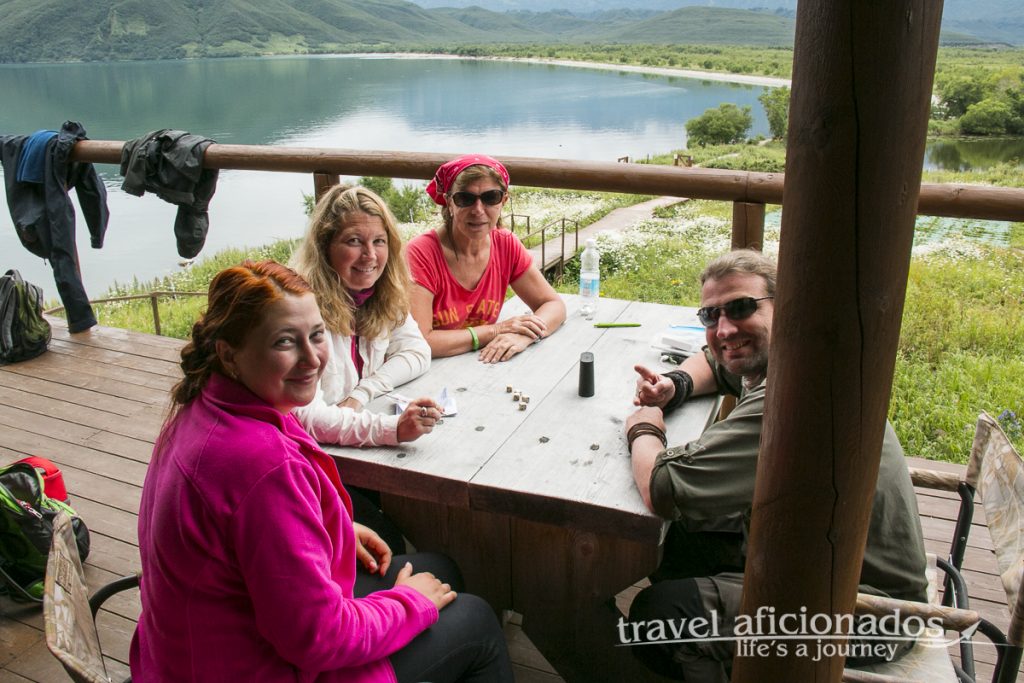
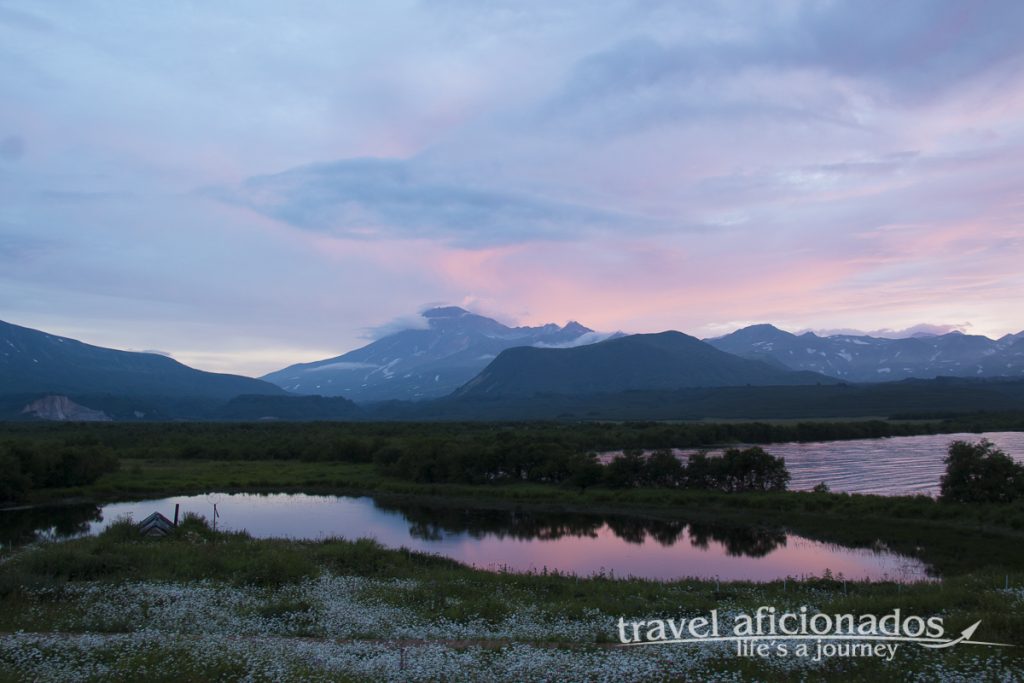
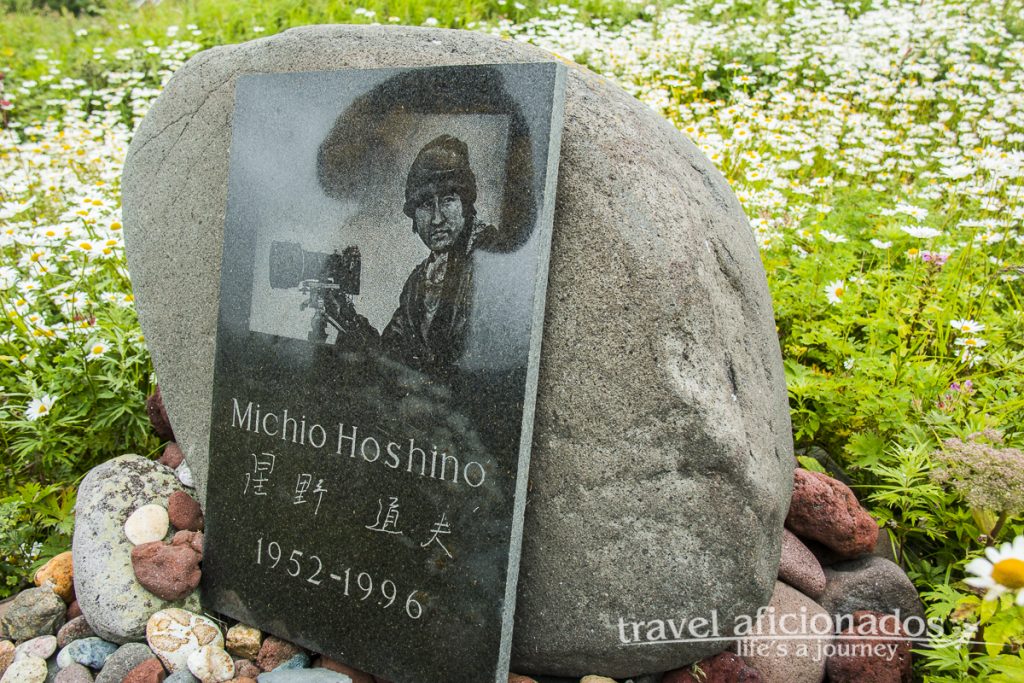
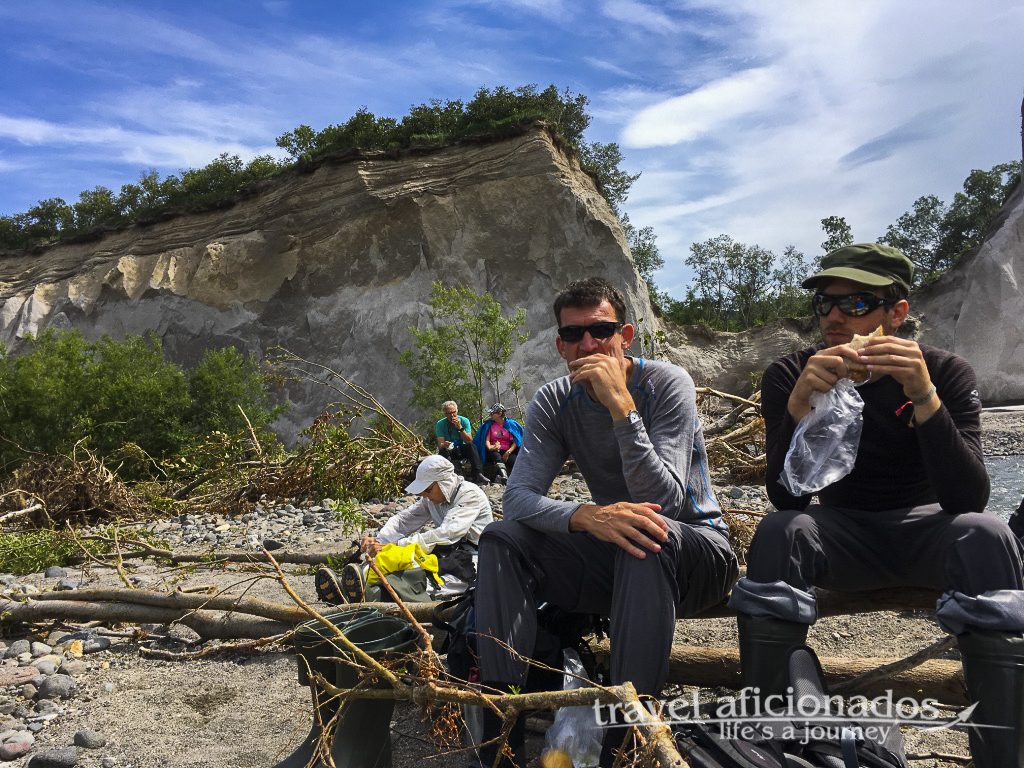
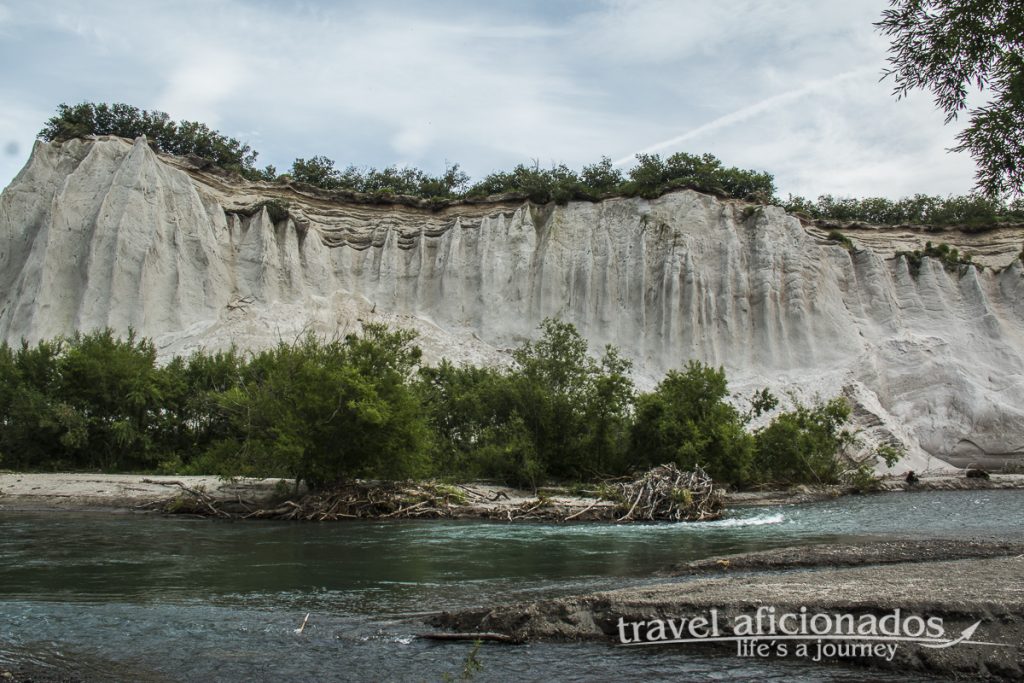
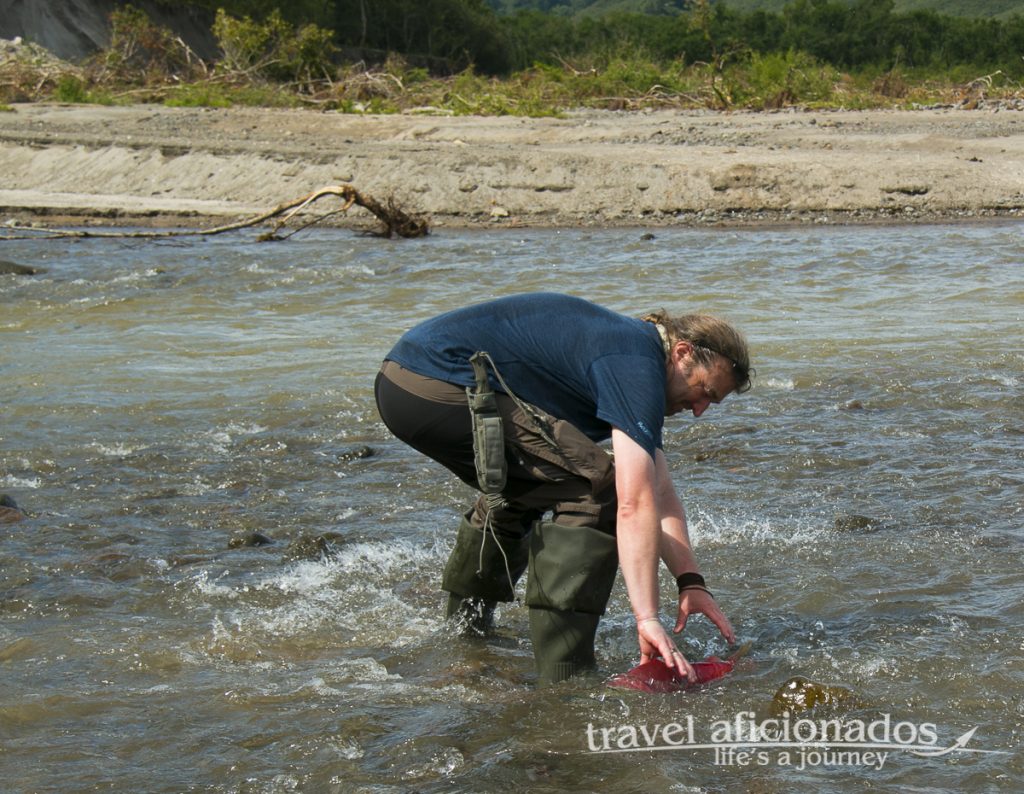
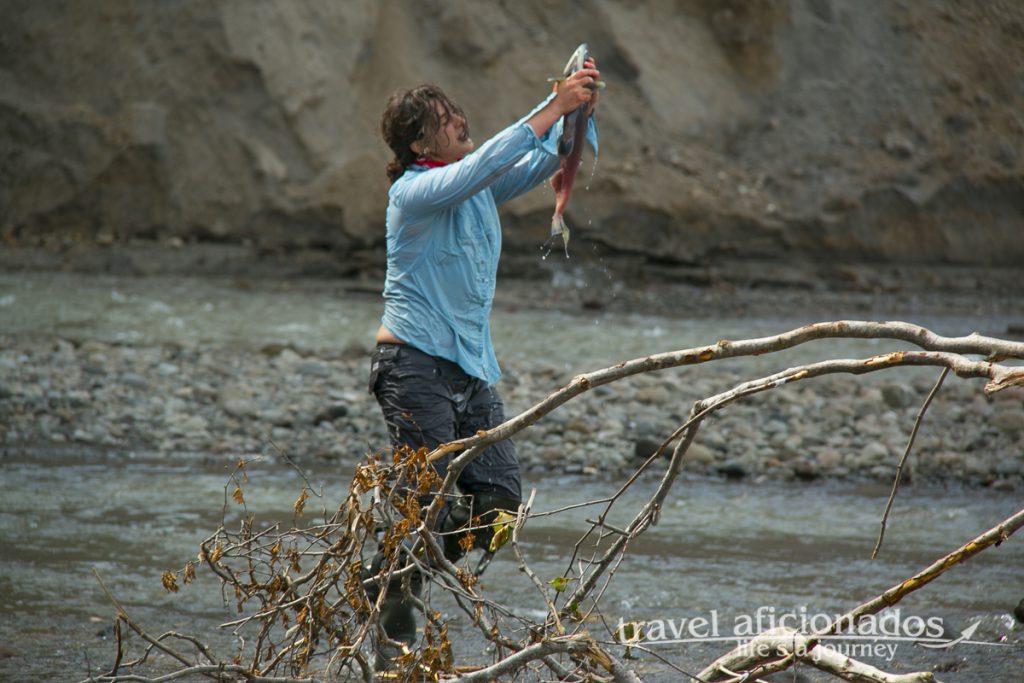
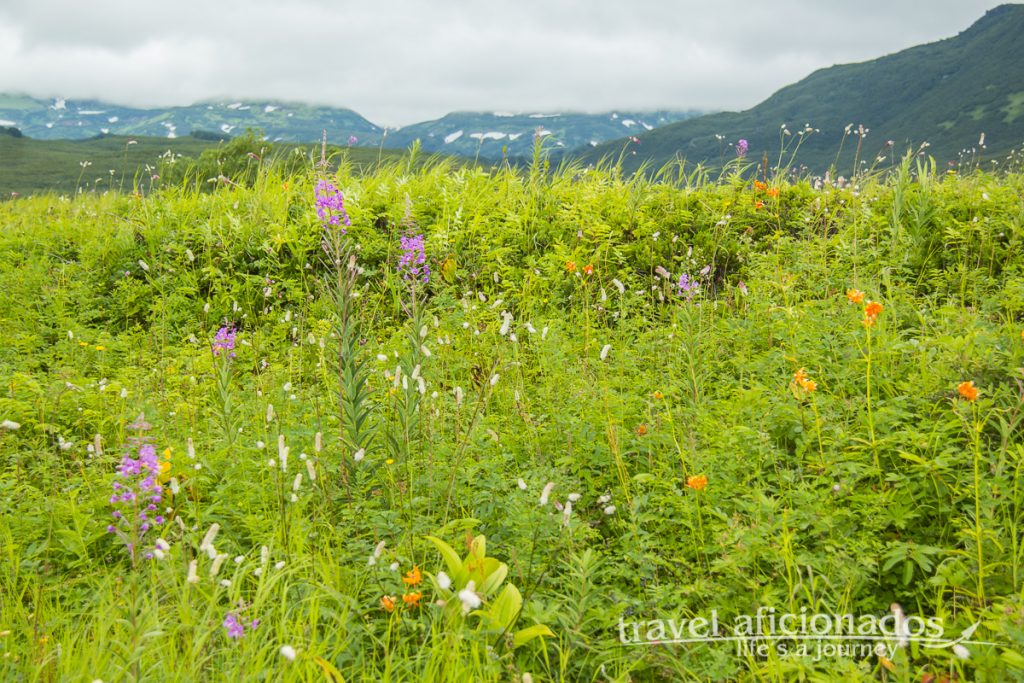
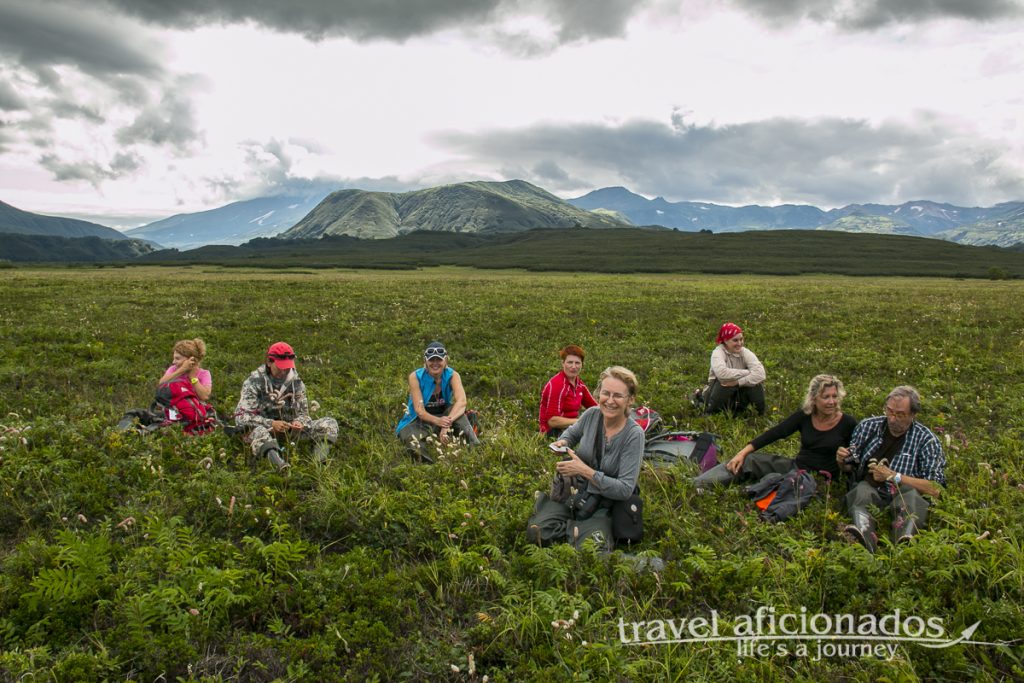
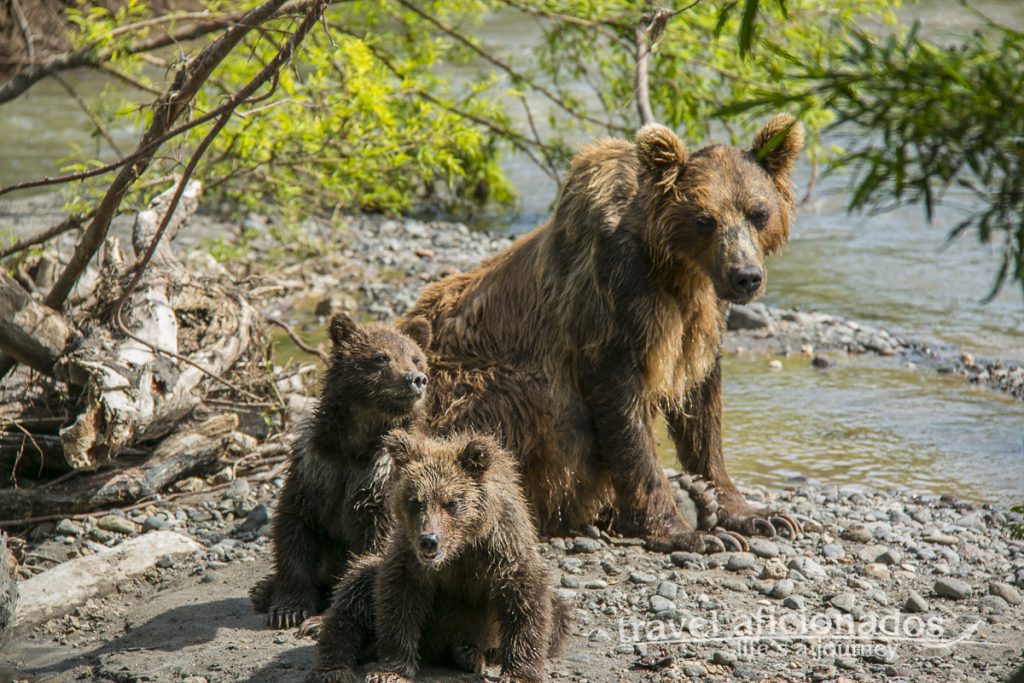
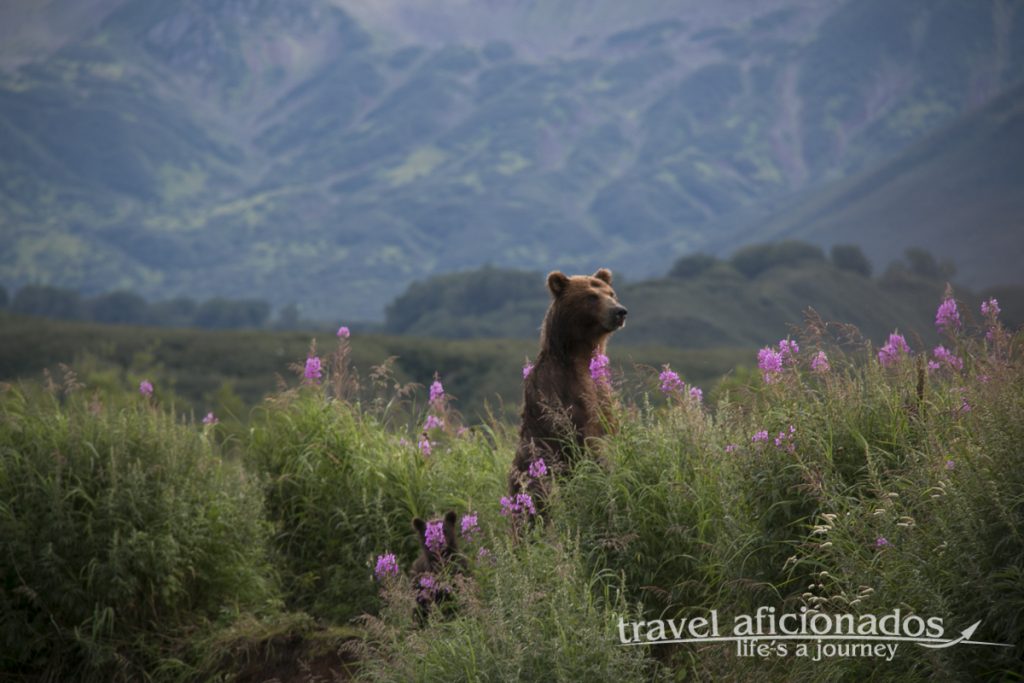
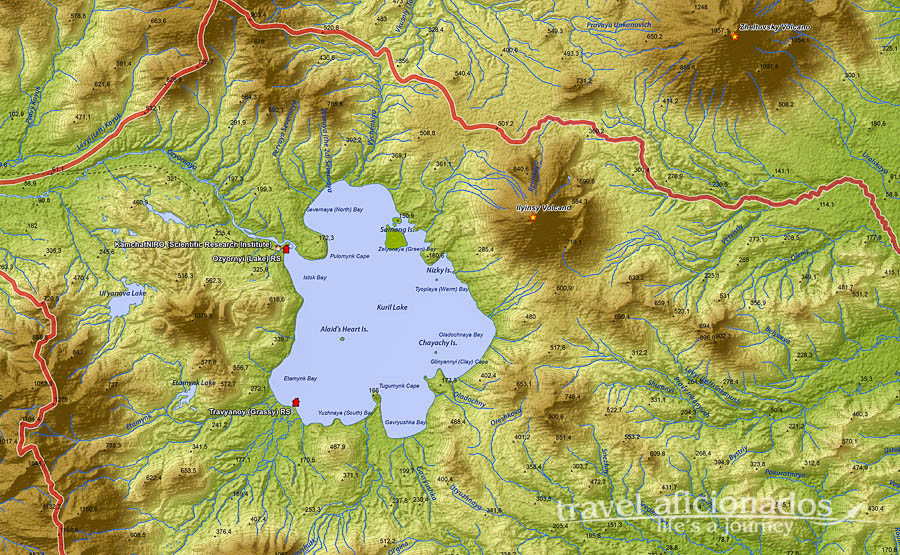
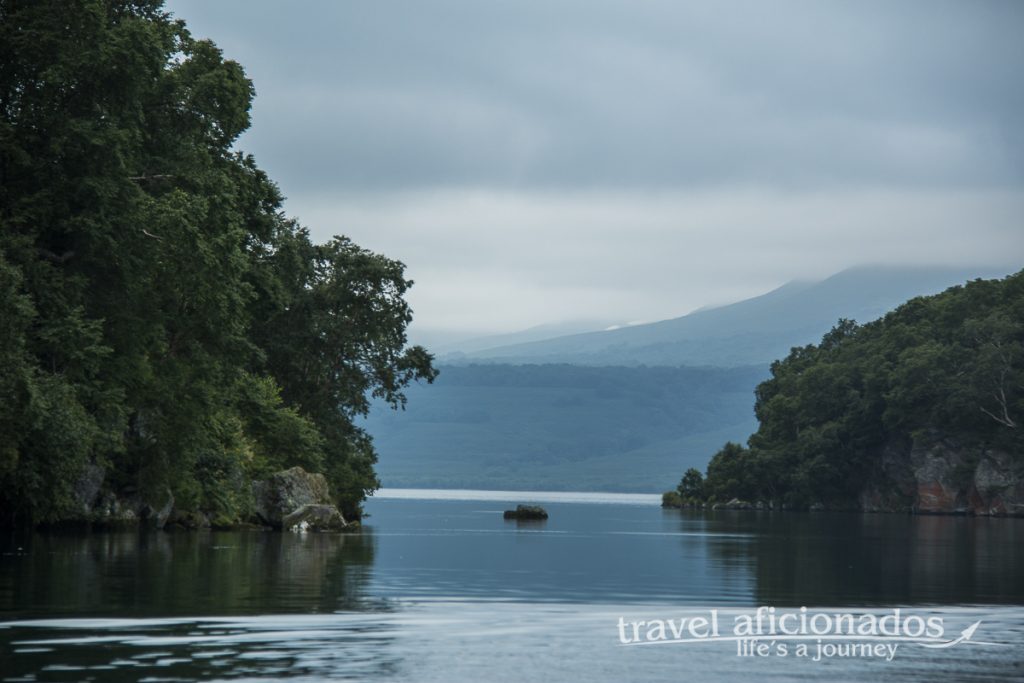
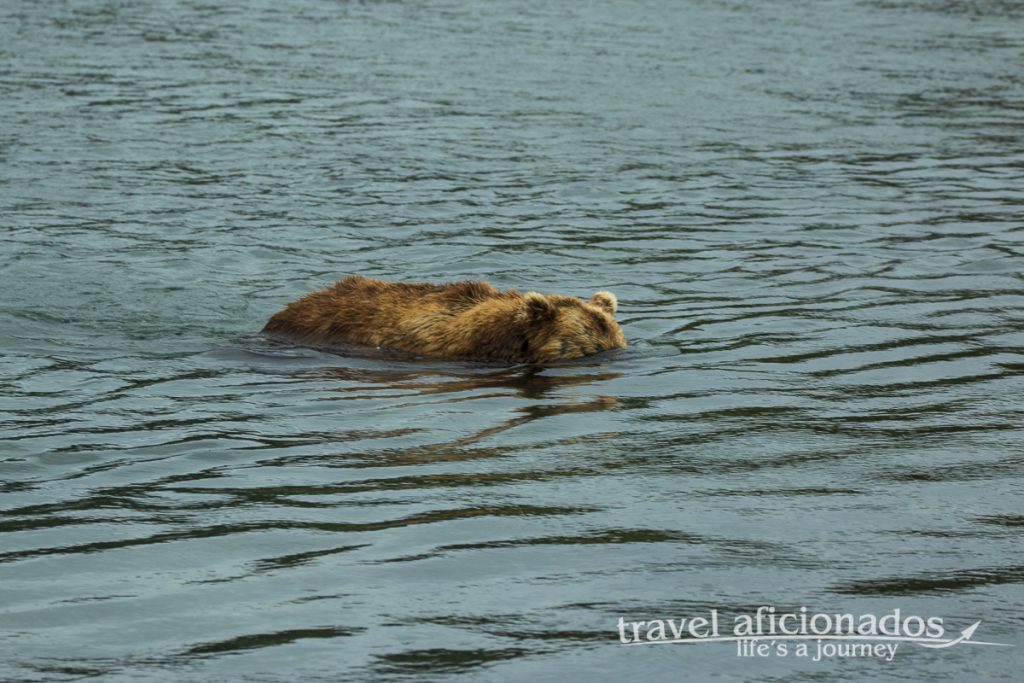
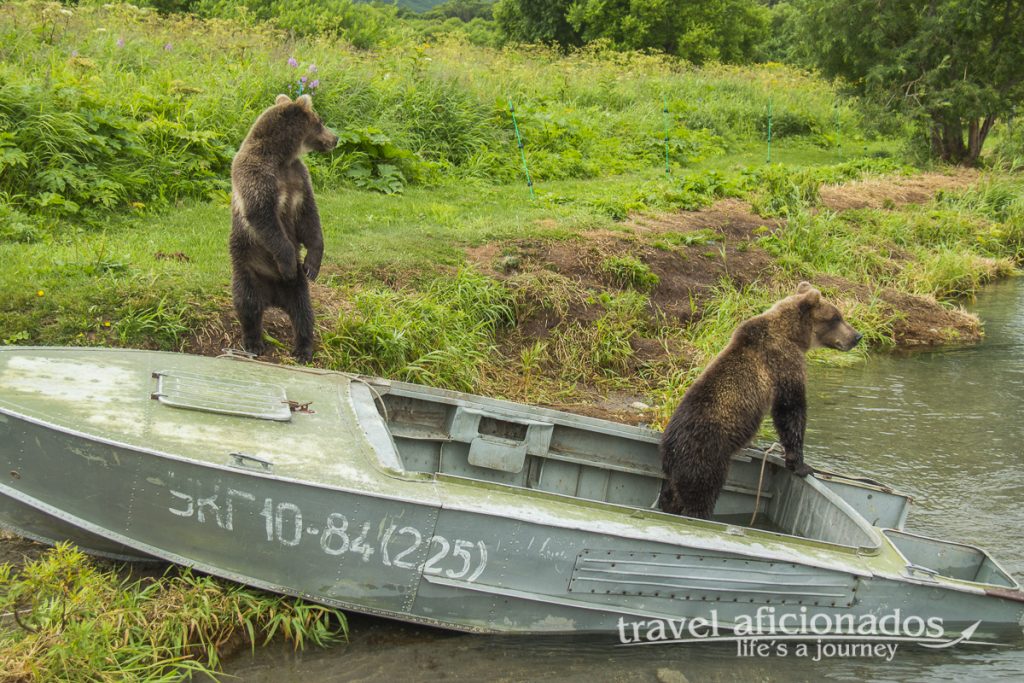
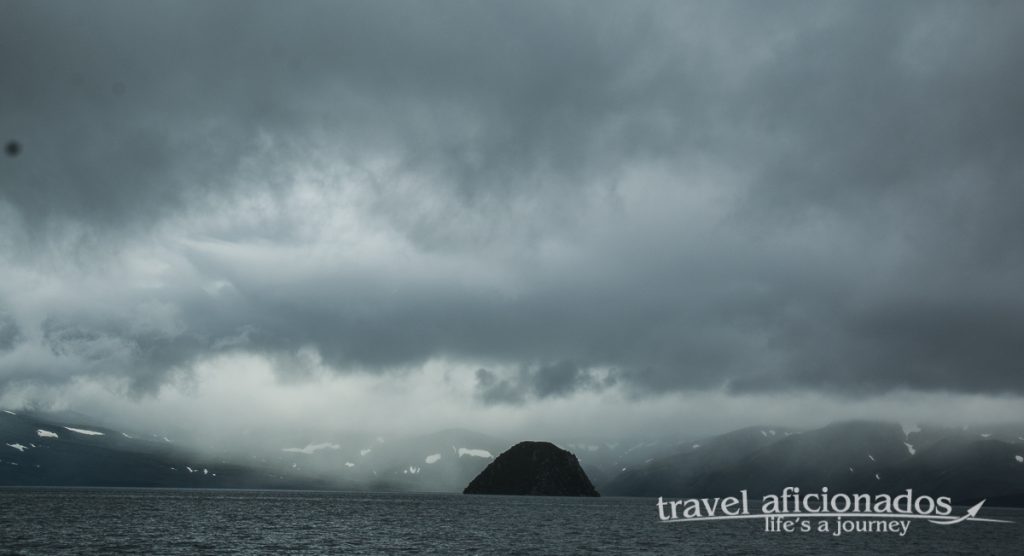
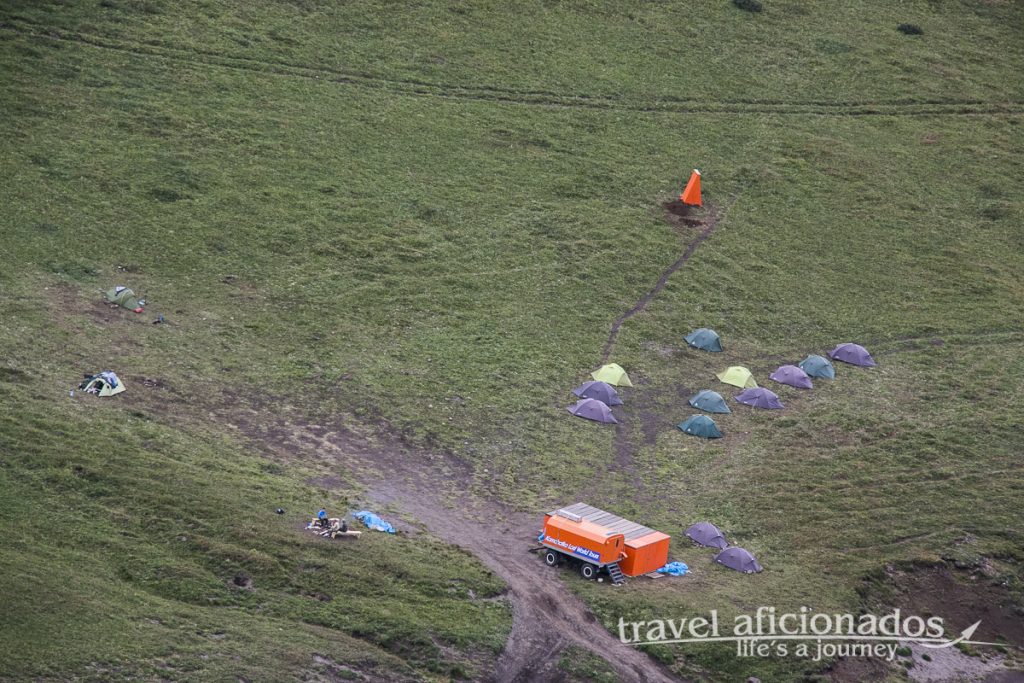
No comments yet.